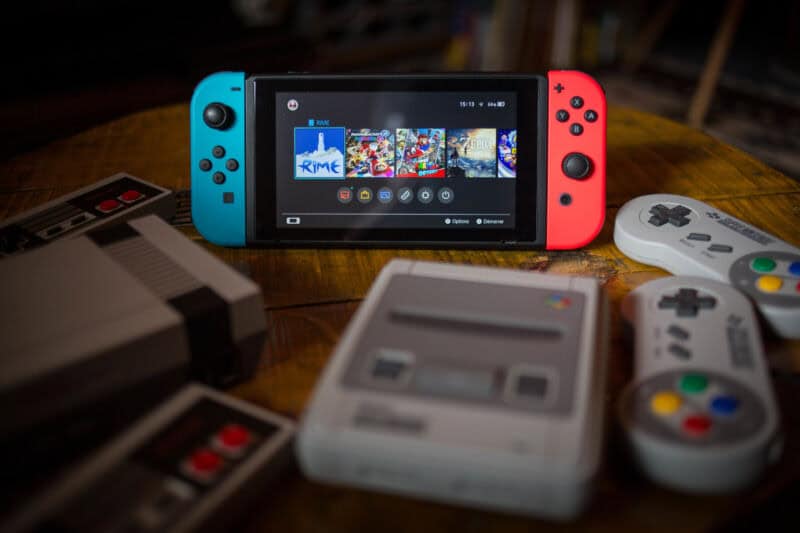In terms of both its hardware and its software, few game companies are as integral to the evolution of video games as Nintendo. Beginning as a playing card manufacturer and then entering into the toy business in the latter half of the 20th Century, Nintendo’s push into arcades would see the company achieve groundbreaking success, leading to a string of home consoles that would single-handedly rebirth the video game market in the West and see the company’s name become synonymous with gaming itself. The best Nintendo games are a veritable “who’s who” of some of the most important and iconic titles in the history of the medium, thanks in no small part to the company’s ownership of legendary franchises like Super Mario Bros. and The Legend of Zelda.
Donkey Kong
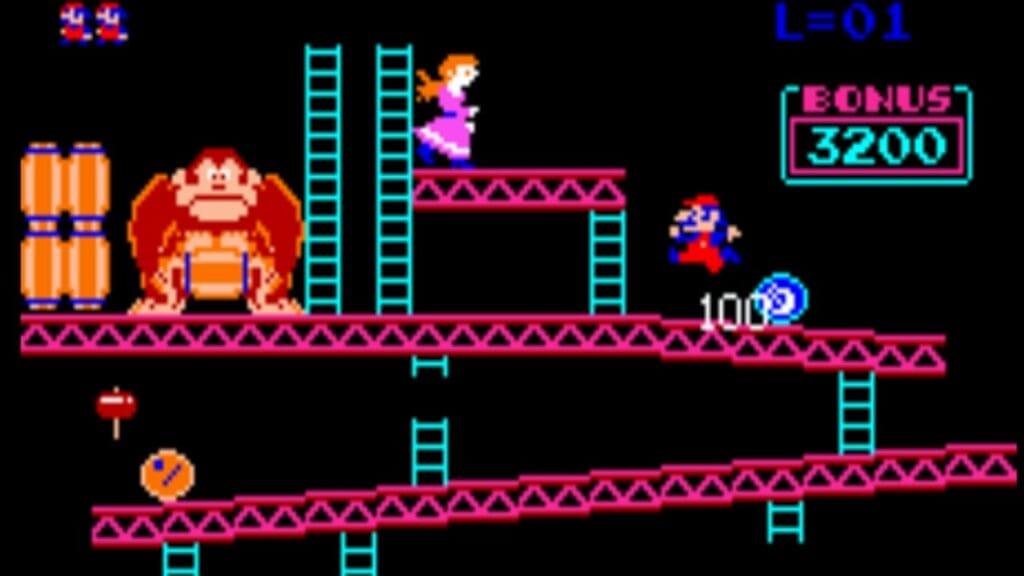
©Donkey Kong gameplay screenshot - Original
- Release Date — July 31, 1981
- Platforms — Arcade
- Review Aggregate Score — N/A
The original Donkey Kong sits right alongside legendary coin-op cabinets like Pac-Man and Space Invaders as one of the groundbreaking early arcade successes, with the title becoming a massive hit both in Japan and in the West. Additionally, Donkey Kong marks the first appearance of a certain Italian plumber who would soon become Nintendo’s mascot, with players controlling an early version of Mario as they make their way to the top of increasingly difficult mazes while dodging rolling barrels courtesy of the titular ape holding Pauline hostage. Donkey Kong is one of the most important and foundational titles in the growing popularity of arcades in the 1980s, and its success would eventually pave the way for Nintendo to bring the Famicom to the West as the NES.
Super Mario Bros.
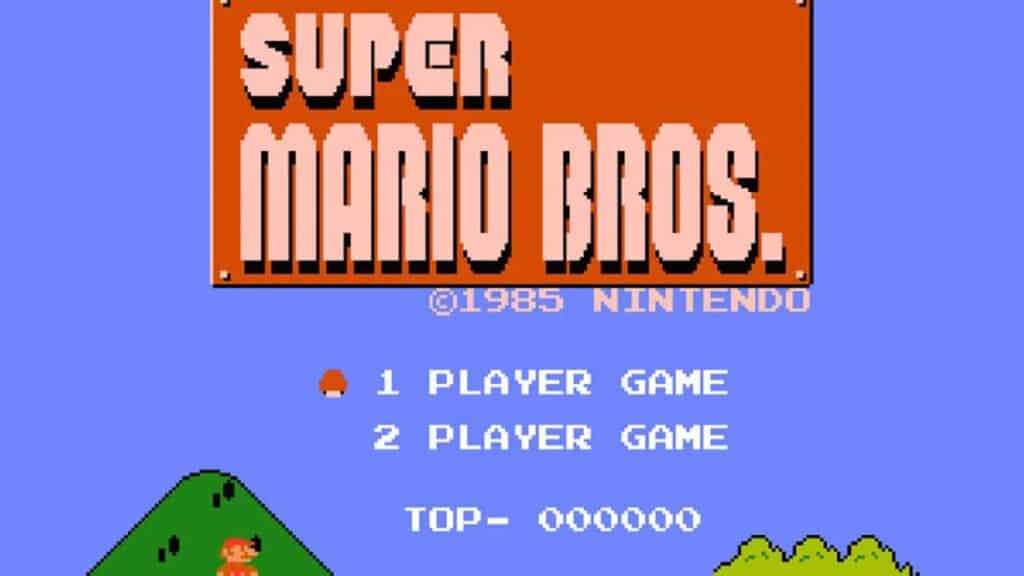
©Super Mario Bros. gameplay screenshot - Original
- Release Date — September 13, 1985
- Platforms — NES
- Review Aggregate Score — 95% (Universal Acclaim)
The original Super Mario Bros. is an essential title in the continued evolution of video games, reinventing the framework of the platformer genre and making the most of the NES/Famicom’s limited hardware to wow players with scrolling screens, hidden secrets, and some of the most satisfying and malleable precision platforming challenges. There’s no denying that Shigeru Miyamoto’s masterpiece is largely responsible for the ensuing Nintendo craze that would take over the West. As such, Super Mario Bros. is a pivotal title in helping to rebirth the medium of video games following the industry crash of 1983.
Excitebike
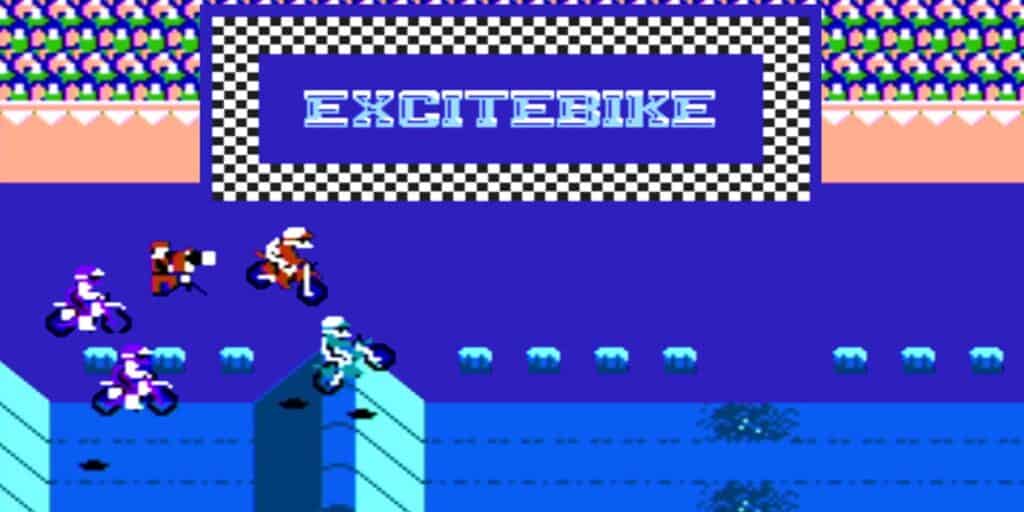
©Excitebike gameplay screenshot - Original
- Release Date — October 18, 1985
- Platforms — NES
- Review Aggregate Score — 92% (Universal Acclaim)
Another of the NES’ launch titles, Excitebike is one of the earliest arcade ports to the console, taking Nintendo’s popular Excitebike cabinet and faithfully bringing it into players’ living rooms. Interestingly, Excitebike is another of legendary Nintendo designer Shigeru Miyamoto’s games, with the title’s side-scrolling engine being the very same one utilized in Super Mario Bros. The title’s fun and accessible take on the sport of motocross would result in it being a huge hit in the West and eventually becoming one of the NES’ best-selling titles.
Kid Icarus
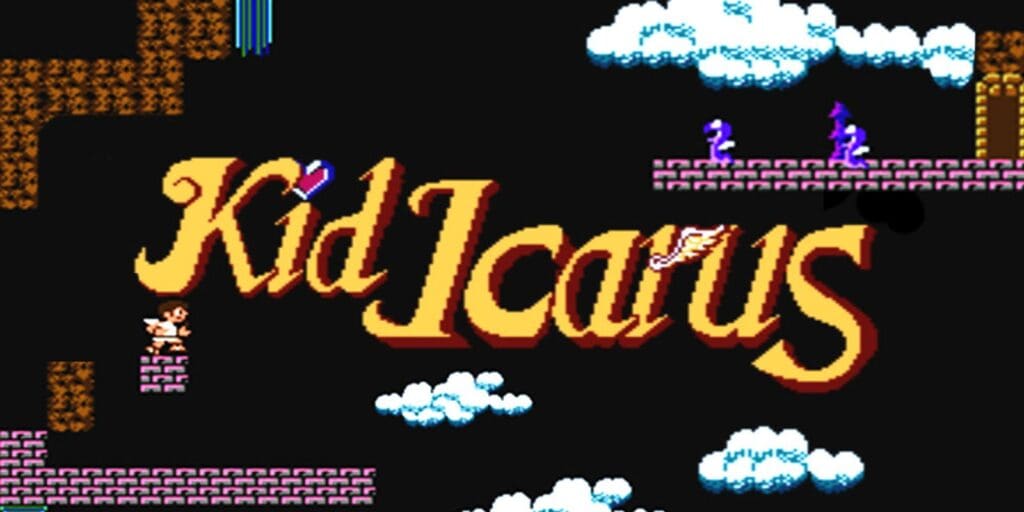
©Kid Icarus gameplay screenshot - Original
- Release Date — December 19, 1986
- Platforms — NES
- Review Aggregate Score — N/A
After initially arriving on the Famicom Disk System in Japan, Nintendo’s R&D1 division was able to utilize new developments in technology to squeeze Kid Icarus onto a standard NES ROM cartridge and bring the title to the West. Between its imposing length and a myriad of secrets, Kid Icarus is decidedly a more niche title than other action platformers of the era, but those who grew up playing the title no doubt have fond memories of its Greek mythology-inspired stages and enemies.
Metroid
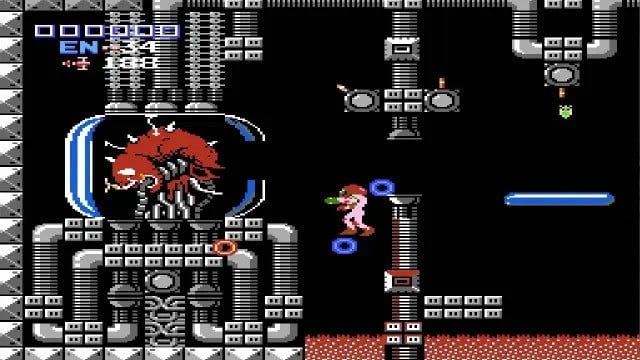
©Metroid screenshot - Original
- Release Date — August 15, 1987
- Platforms — NES
- Review Aggregate Score — 93% (Universal Acclaim)
Another first-party title to benefit from new technological developments and come to the NES following a launch on the Famicom Disk System is Gunpei Yokoi’s legendary Metroid. Unlike other action platformers of the era, which primarily utilized side-scrolling levels and could be completed in a single sitting, Metroid was a sprawling open-ended adventure with opportunities for non-linear progression and a whole host of secrets to uncover. The NES version of the title bypassed the original’s save functionality by using a novel password system, opening up the mysteries of Planet Zebes to a whole generation of gamers and helping to birth half of the Metroidvania subgenre.
The Legend of Zelda
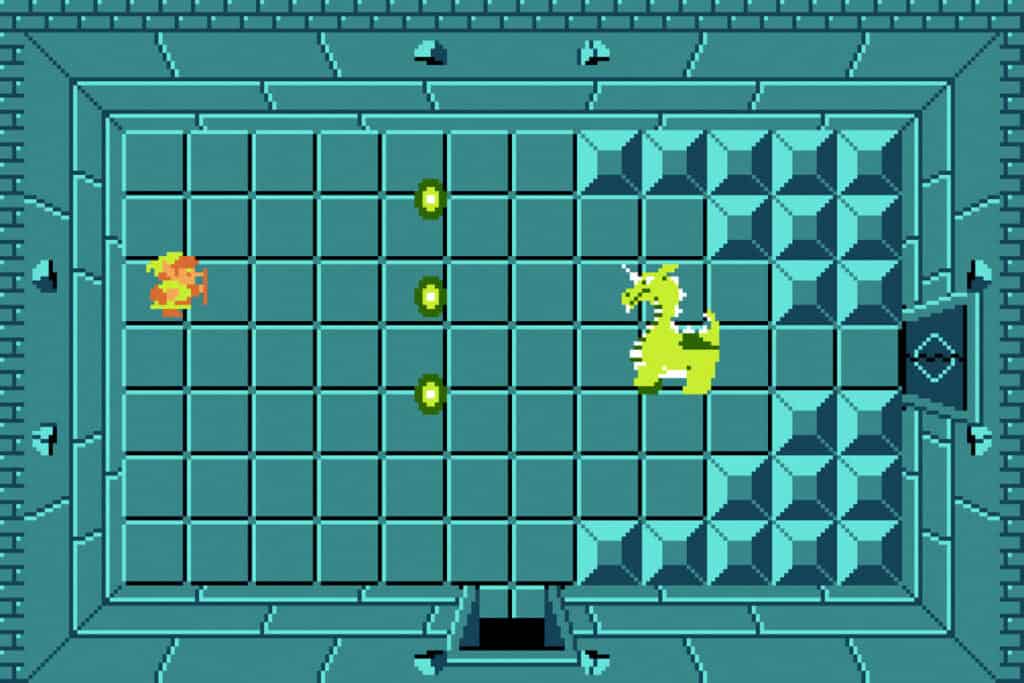
©Zelda gameplay screenshot - Original
- Release Date — August 22, 1987
- Platforms — NES
- Review Aggregate Score — 90% (Universal Acclaim)
Along with Super Mario Bros., the original Legend of Zelda is arguably one of the most important games ever released and another shining example of Shigeru Miyamoto’s brilliance and innovation. Though it does borrow heavily from other action RPGs of the era, Legend of Zelda is unique in that it gives the player total freedom to tackle its massive adventure in any way they see fit. Combat and puzzles are perfectly balanced to make the game accessible while also not too easy, and The Legend of Zelda‘s iconic visuals and earworm of a soundtrack (courtesy of the legendary Koji Kondo) cement the game as a formative title in the early gaming history of millions of players.
Mike Tyson’s Punch-Out!!
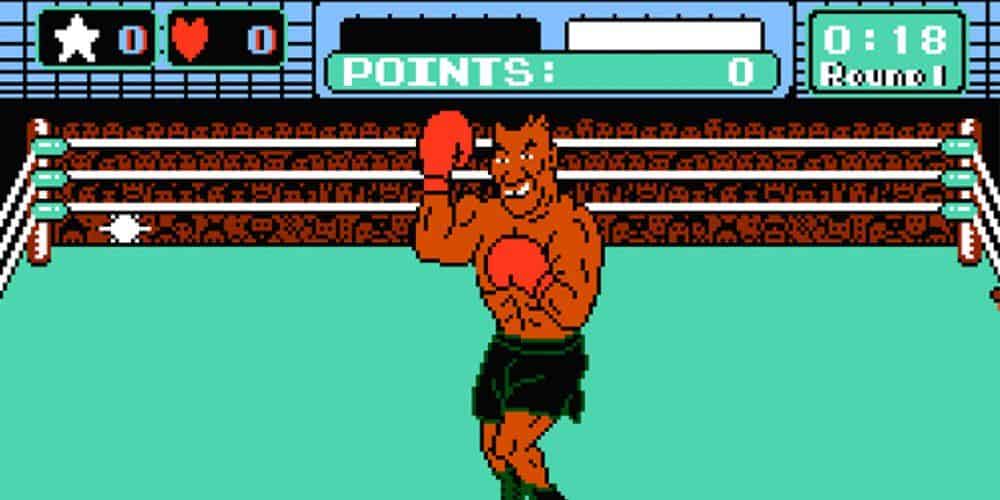
©Mike Tyson's Punch-Out!! gameplay screenshot - Original
- Release Date — October 18, 1987
- Platforms — NES
- Review Aggregate Score — 89% (Generally Favorable)
Nintendo’s Punch-Out!! cabinet was a considerable success in arcades. When it came time to port the experience to the company’s home console, they cashed in on the career trajectory and success of one of the boxing world’s rising stars, Mike Tyson, to make the game more appealing to a Western audience. Along with The Legend of Zelda and Metroid, Mike Tyson’s Punch-Out!! is one of the NES’ legendary titles from 1987 that would find its way into the hands of millions of young players, and its pattern-based fighting and dodging still hold up even in a modern context.
Tetris
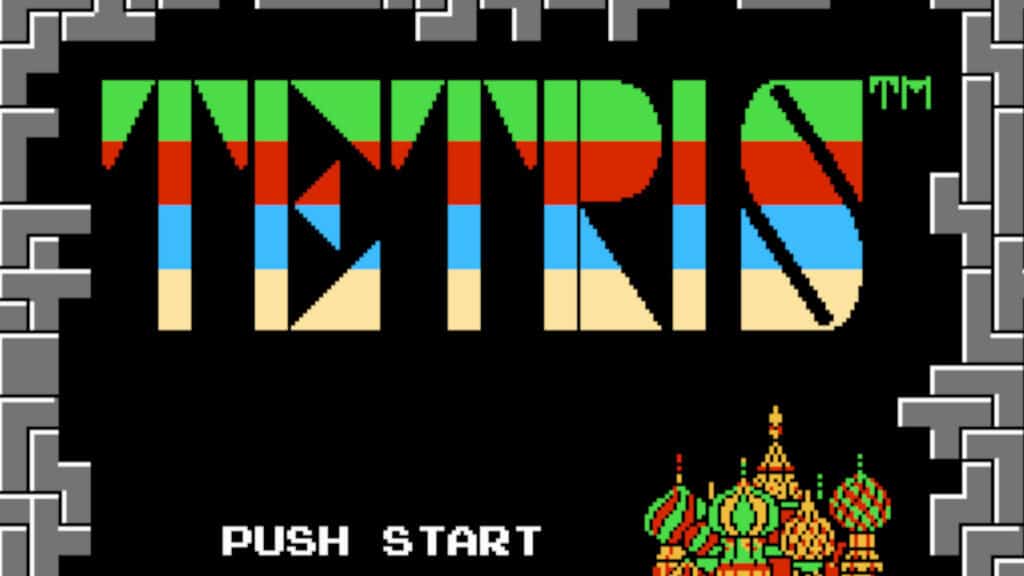
©Tetris gameplay screenshot - Original
- Release Date — November 1989
- Platforms — NES, Game Boy
- Review Aggregate Score — 89% (Generally Favorable)
Alexey Pajitnov’s Tetris is one of the titles that undoubtedly deserves a spot on the “Mount Rushmore” of gaming, with the brilliant puzzle game breaking through the Iron Curtain itself and becoming a rousing global success. Several companies would license the title for release on various platforms, but Nintendo’s iconic NES and Game Boy versions are still some of the most widely played, with the NES version, in particular, remaining a mainstay in the competitive Tetris speedrunning scene. Players can rotate and hard-drop Tetrominos in countless formats, but the NES version of Tetris is somehow one of the best more than 3 decades later.
Super Mario Bros. 3
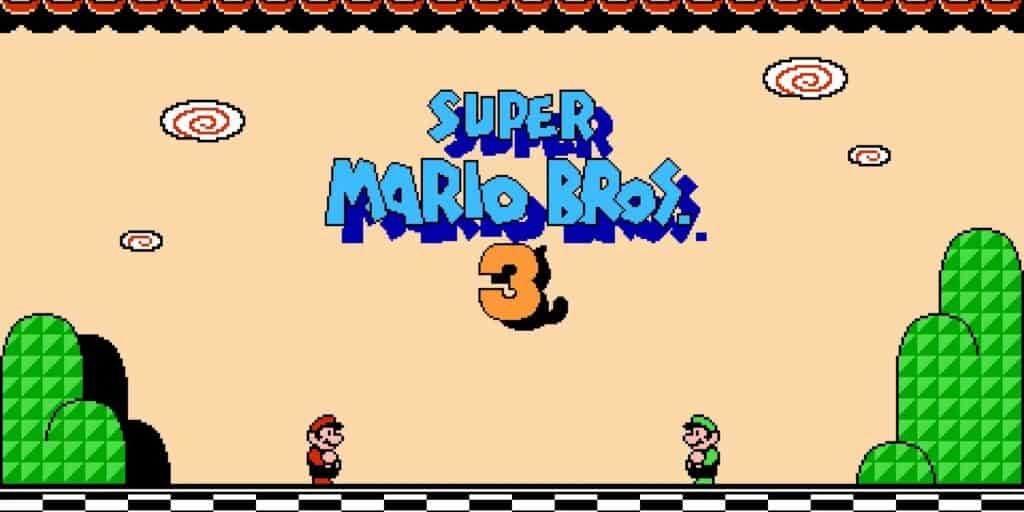
©Super Mario Bros. 3 gameplay screenshot - Original
- Release Date — February 12, 1990
- Platforms — NES
- Review Aggregate Score — 98% (Universal Acclaim)
When discussing the genius of Nintendo luminary Shigeru Miyamoto, it’s practically impossible to not mention Super Mario Bros. 3 as one of the most important and pivotal games in the platformer genre. For the third entry in the Super Mario Bros. series, Miyamoto and his team completely revamped the playbook for what a Mario game can and should be, introducing a slew of new items and power-ups that change the way Mario handles, a massive series of worlds connected by beautifully designed overworld maps, and ultra-challenging platforming sections that tested even the most veteran players’ skills. Super Mario Bros. 3 lays claim to being both the best Mario title ever and the best game on the NES.
Super Mario World
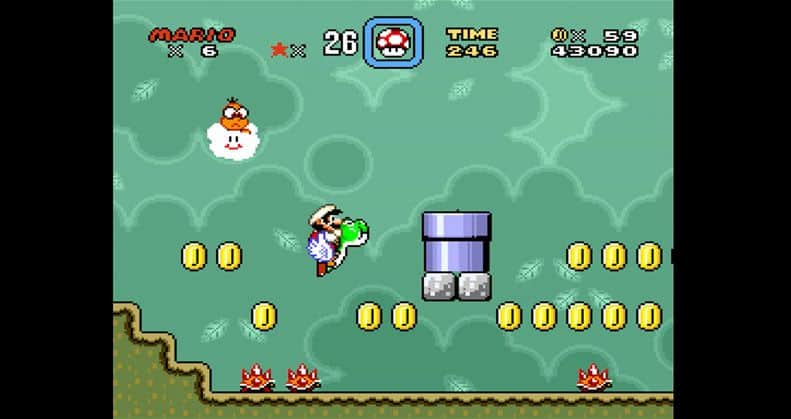
©Nintendo Co., Ltd. - Original
- Release Date — August 23, 1991
- Platforms — SNES
- Review Aggregate Score — 94% (Universal Acclaim)
The resources necessary for game localization would result in Super Mario Bros. 3 arriving in the West just a year before the launch of the Super Nintendo Entertainment System, and the SNES’ Super Mario World pack-in showcases a significant evolutionary leap over its predecessor even in that short period. Super Mario World uses the same general format as Super Mario Bros. 3 but transports players to the mysterious Dinosaur World and introduces one of the Mario series’ most enduring and popular characters: Yoshi. Though SMB3 might technically be the more important game, Super Mario World looks, controls, sounds, and feels better in almost every regard.
F-Zero
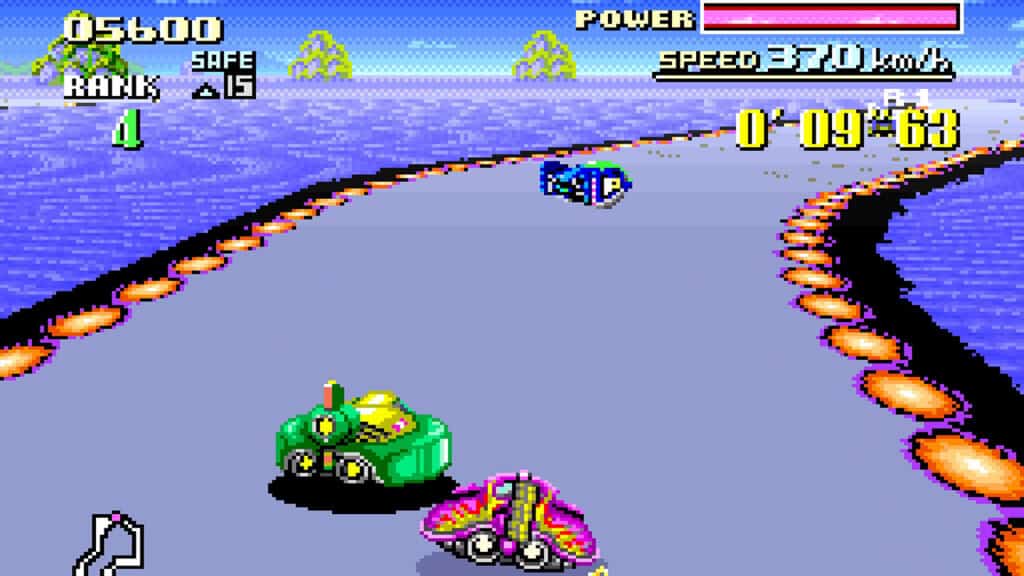
©F-Zero gameplay screenshot - Original
- Release Date — August 23, 1991
- Platforms — SNES
- Review Aggregate Score — 83% (Generally Favorable)
The SNES’ launch lineup in the West was an incredibly strong group of games, bolstered by a selection of first-party Nintendo titles that could showcase the power of the system and justify its existence at a time when the idea of “console generations” made consumers wary. Two of those titles were brand-new franchises for Nintendo, with the futuristic racer F-Zero standing out as one of the best launch games thanks to its unmatched sense of speed and scale. The SNES’ chipset made the most of the console’s limited processing power by partitioning the graphics unit into separate modes, and the iconic “Mode 7” that simulates three dimensions via parallax scrolling and dynamic shifting of pixel resolution gives F-Zero a look that was (at the time) as futuristic as the races themselves.
Pilotwings
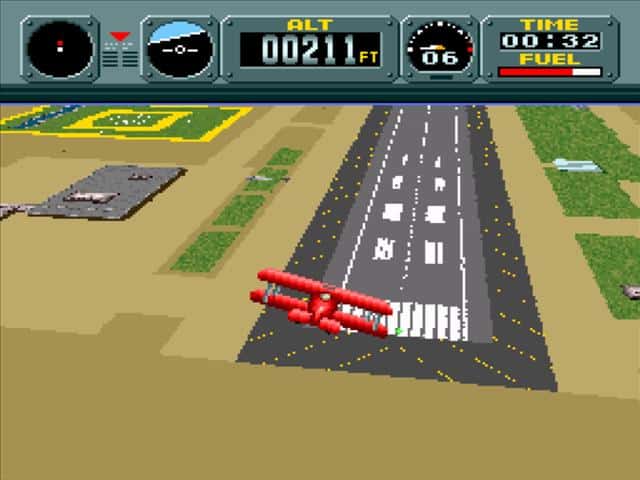
©Pilotwings gameplay screenshot - Original
- Release Date — August 23, 1991
- Platforms — SNES
- Review Aggregate Score — 82% (Generally Favorable)
The other brand-new Nintendo franchise and title in the SNES’ launch lineup is the incredible and memorable Pilotwings, which also happens to make great use of the Mode 7 functionality to give off the impression of 3D graphics in a 16-bit game. Gameplay in Pilotwings essentially boils down to one of four flight-based mini-games spread out over a series of “License” challenges, but each of those different games is so fun and such a great showcase for the capability of the SNES that Pilotwings became an essential title for any SNES owner. Few games can elicit the same sense of wonder that Pilotwings did in 1991 when booting up the Light Plane challenge for the first time.
The Legend of Zelda: A Link to the Past
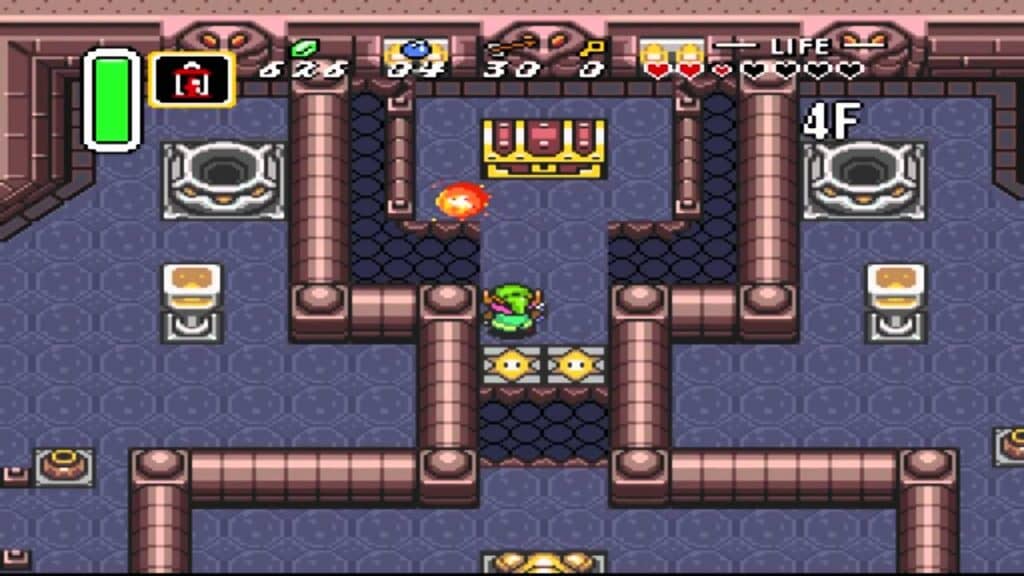
©The Legend Of Zelda: A Link To The Past screenshot - Original
- Release Date — April 13, 1992
- Platforms — SNES
- Review Aggregate Score — 93% (Universal Acclaim)
Much like Super Mario Bros. 3, the third entry in the Legend of Zelda series would course-correct the franchise after a disappointing second game, returning the franchise to its roots in spectacular fashion. The Legend of Zelda: A Link to the Past takes players back to the top-down perspective of the first Zelda game all while introducing novel concepts like twin maps (a Light and Dark World), an initial quest before the game truly opens up, and a whole slew of collectibles and secrets that beg to be discovered thanks to the title’s near-perfect combat, traversal, and puzzle-solving. A Link to the Past is so good that it ends up laying the foundation for every single 2D Zelda game to come after it.
The Legend of Zelda: Link’s Awakening
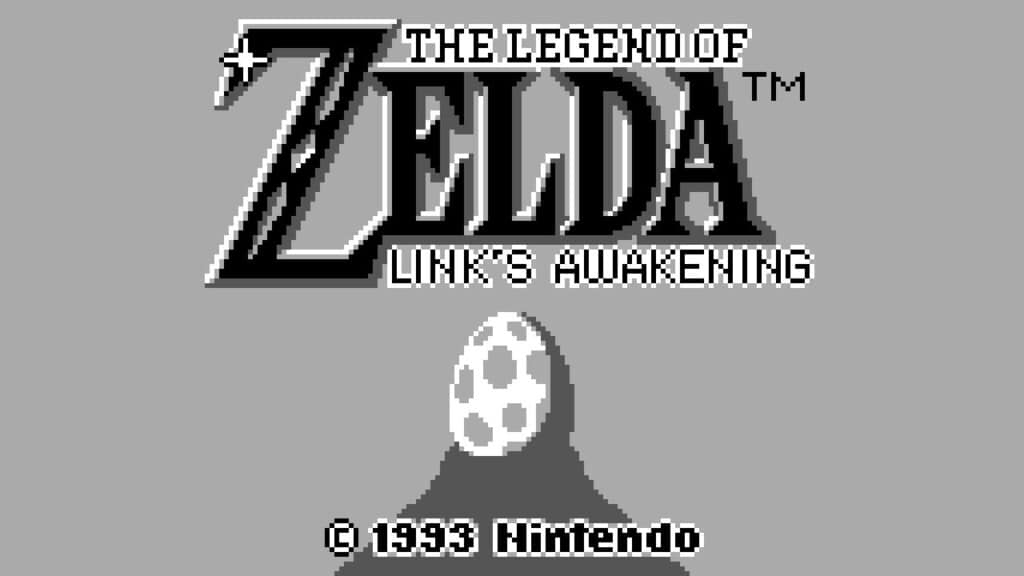
©The Legend of Zelda: Link's Awakening gameplay screenshot - Original
- Release Date — August 6, 1993
- Platforms — Game Boy
- Review Aggregate Score — 90% (Universal Acclaim)
Speaking of games benefitting from A Link to the Past‘s innovations, The Legend of Zelda: Link’s Awakening is the first game to use the SNES Zelda as a framework for its adventure. As a result, it ends up being one of the better 2D Zelda games and a worthy follow-up to the SNES classic, all while maintaining its own unique tonality and a charming, off-beat story. Link’s Awakening‘s core team was very vocal about using Twin Peaks as a primary narrative inspiration for the game, and it shows in how mysterious and strange the title is in comparison to the more straightforward and traditional A Link to the Past. That Nintendo was able to squeeze an adventure on par with Link’s SNES outing onto the Game Boy is almost a miracle in itself.
Super Metroid
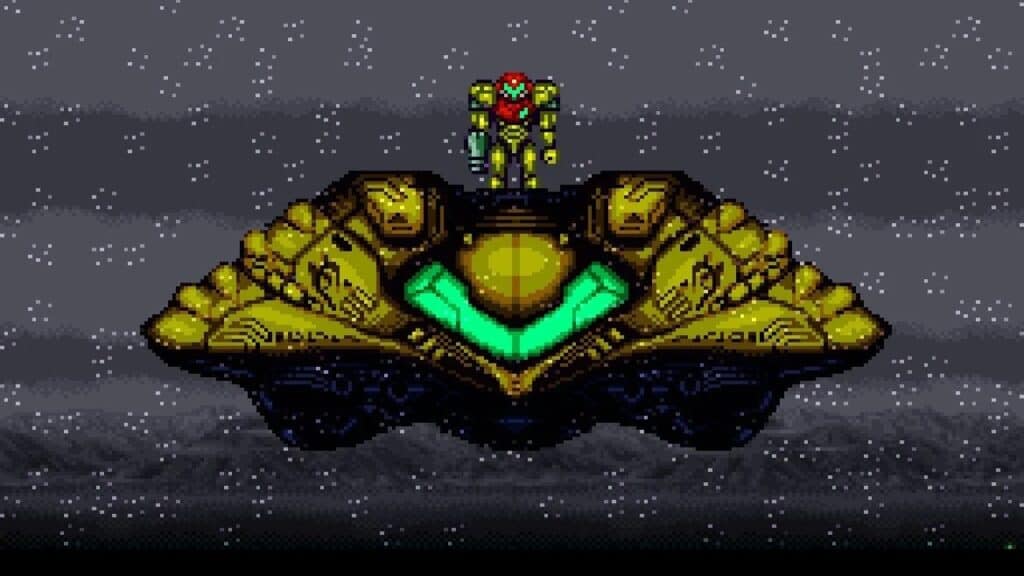
©Super Metroid gameplay screenshot - Original
- Release Date — April 18, 1994
- Platforms — SNES
- Review Aggregate Score — 97% (Universal Acclaim)
The first Metroid might technically be the original example players have of a Metroidvania, but Super Metroid is the true foundational bedrock on which the subgenre is built. Without the advancements Super Metroid makes (a massive, interconnected map that players can reference at any time, hidden chambers, item and ability-gated progression, etc.), there’s every possibility that Koji Igarashi and his team at Konami would not have implemented those same ideas into Castlevania: Symphony of the Night, resulting in the term “Metroidvania” never existing. Thankfully, Super Metroid does exist, and it’s a near-perfect game thanks to its incredible pacing, sense of isolation, groundbreaking soundtrack, and emotionally charged ending.
Donkey Kong Country
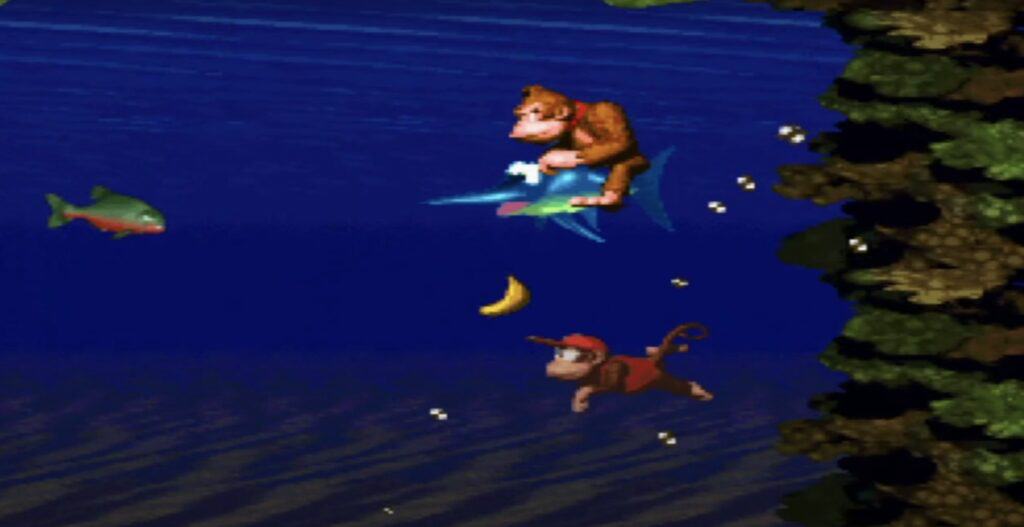
©Donkey Kong Country gameplay - Original
- Release Date — November 18, 1994
- Platforms — SNES
- Review Aggregate Score — 91% (Universal Acclaim)
One of the only platformers to come close to dethroning Super Mario World as the genre’s best SNES game is the legendary Donkey Kong Country. Even in the wake of the Sony PlayStation entering the console race and the advancements in technology giving way to CD-ROM games with full 3D graphics, Donkey Kong Country is a visually impressive game that shows how talented the team at Rare was at working around the SNES’ limitations. It also helps that the title has some excellent platforming backed up by a respectable challenge and an absolute earworm of a soundtrack.
EarthBound
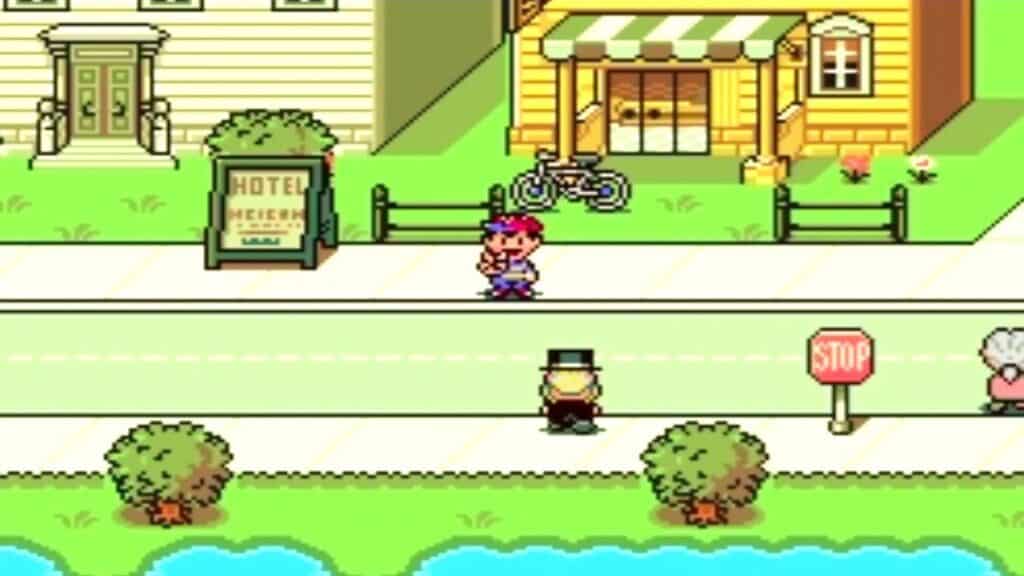
©EarthBound gameplay screenshot - Original
- Release Date — June 5, 1995
- Platforms — SNES
- Review Aggregate Score — 88% (Generally Favorable)
Releasing at a time when most JRPGs were super serious affairs with bleak fantasy settings and grimdark protagonists, EarthBound is a decidedly unique role-playing game by comparison. Instead of a band of ultra-powerful warriors, players get to control a group of school-aged children as they hope to repel an impending alien invasion of their small, idyllic town. EarthBound‘s undeniable charm, offbeat sense of humor, and cartoonish visuals belie a healthy challenge and some finely tuned RPG mechanics, proving that it’s unwise to judge a book by its cover.
Super Mario 64
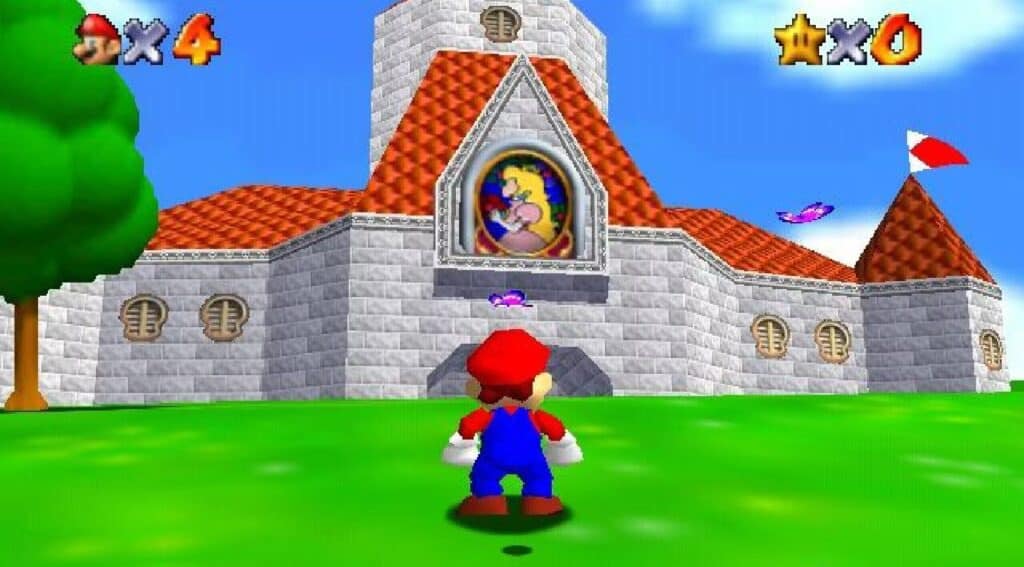
©Super Mario 64 gameplay screenshot - Original
- Release Date — September 29, 1996
- Platforms — Nintendo 64
- Review Aggregate Score — 96% (Universal Acclaim)
As the first 3D game in the series, Super Mario 64 had a lot to prove. Not only was Nintendo sticking to cartridges at a time when its competitors were moving to CD-ROM-based systems, advancements in 3D technology had already resulted in some full-3D platformers that were less-than-stellar (and that’s putting it lightly). Super Mario 64 is one of the most important games of the 5th generation thanks to how it seamlessly translates the core Mario experience into a beautifully designed and fully realized 3D world, all while making a strong case for the analog control stick. Platforming games were never the same.
Mario Kart 64
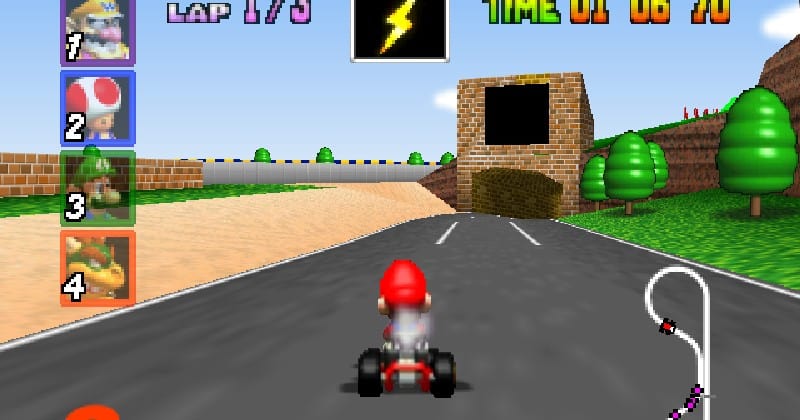
©Mario Kart 64 gameplay screenshot - Original
- Release Date — February 10, 1997
- Platforms — Nintendo 64
- Review Aggregate Score — 83% (Generally Favorable)
Super Mario Kart was an excellent Mario spin-off title on the SNES, but the series really comes into its own on the Nintendo 64 with the timeless Mario Kart 64. Not only are the tracks more varied and iconic than the original selection from Super Mario Kart, the game’s 3D visuals are a significant upgrade over the “faux 3D” made possible by the SNES’ Mode 7. Additionally, the ability to seamlessly play 4-person multiplayer would make a Nintendo 64 and Mario Kart 64 a staple for many players, with the game’s Grand Prix and Battle modes still a hilariously fun time today.
Star Fox 64
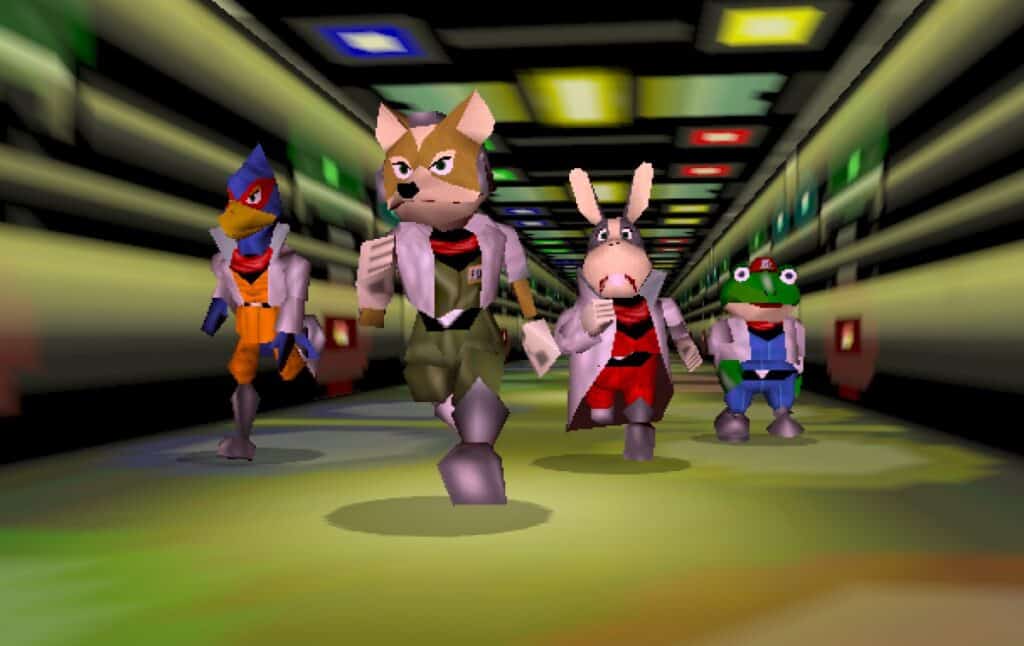
©Star Fox 64 gameplay screenshot - Original
- Release Date — June 30, 1997
- Platforms — Nintendo 64
- Review Aggregate Score — 89% (Generally Favorable)
Star Fox 64 is both part sequel and part remake of the impressive 3D shooter Star Fox, which was way ahead of its time on the SNES. With the power of the Nintendo 64, though, Star Fox 64 feels like the promise of the first game fully realized, with the framerate and visuals receiving a significant upgrade over the original. The Nintendo 64 didn’t have very many shmups with most developers preferring to release games on either the Sega Saturn or the Sony PlayStation, which makes Star Fox 64 all the more important as one of the console’s few standout shooting games and flight sims.
Pokemon Red/Blue
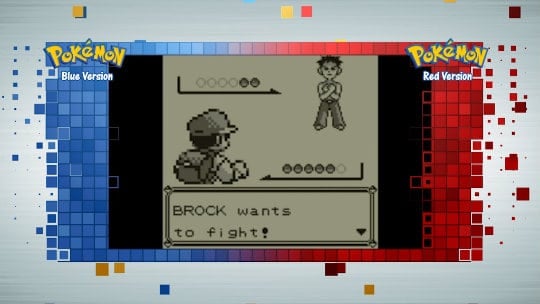
©Gameplay screenshot - Original
- Release Date — September 29, 1998
- Platforms — Game Boy
- Review Aggregate Score — 88% (Generally Favorable)
Other than Super Mario Bros. and The Legend of Zelda, Nintendo’s most important franchise is its incredibly successful monster-taming RPG series Pokemon. The first two entries in the series, Pokemon Red and Pokemon Blue, introduced an entire generation of gamers to the adorable “pocket monsters” as well as the directive to “catch ’em all”, giving rise to the most successful entertainment property of all time and continuing to serve as a pillar of Nintendo’s success and prominence in the world of video games. But without an addictive and compelling gameplay loop in the series’ first two games, none of that future success would have been possible, resulting in Pokemon Red and Blue being hugely important titles in the franchise.
The Legend of Zelda: Ocarina of Time
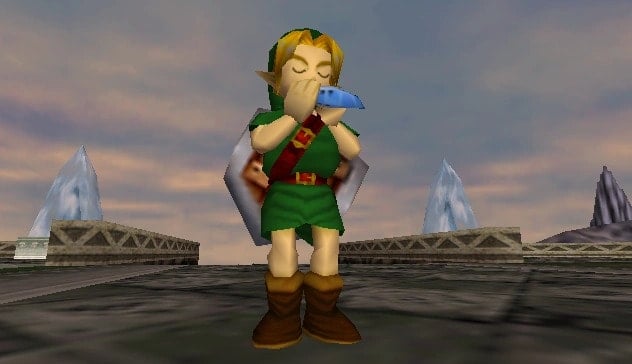
©Screenshot from Ocarina of Time - Original
- Release Date — November 21, 1998
- Platforms — Nintendo 64
- Review Aggregate Score — 99% (Universal Acclaim)
Aside from being the highest-reviewed game of all time, The Legend of Zelda: Ocarina of Time is also one of the most important games in the history of the medium, showcasing the possibility inherent in fully 3D, immersive worlds. Much like Super Mario 64 before it, Ocarina of Time makes good on the promise of a 3D Zelda title by faithfully translating the core experience of a Zelda game into a brand-new dimension, and both the Zelda franchise and video games themselves were never the same afterward. Aside from its importance as an innovative and groundbreaking title, though, Ocarina of Time just happens to contain one of Link’s best adventures and is a timeless example of the appeal of interactive entertainment.
Mario Party 3
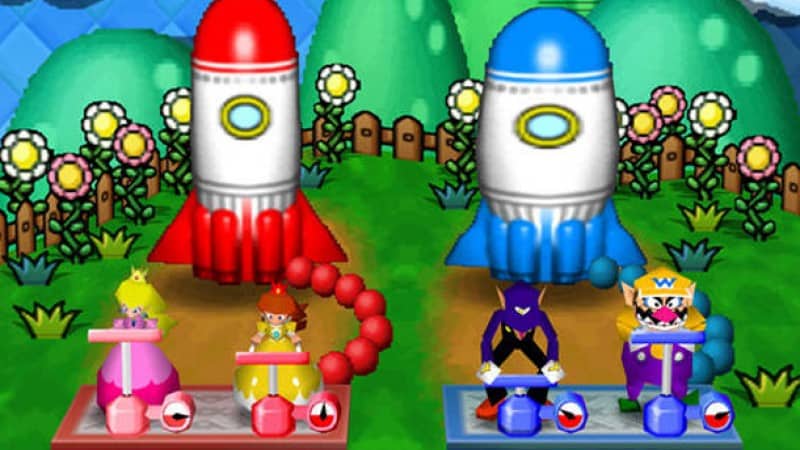
©Mario Party 3 gameplay screenshot - Original
- Release Date — May 7, 2001
- Platforms — Nintendo 64
- Review Aggregate Score — 74% (Mixed or Average)
The Mario Party series is definitely one of those “love it or hate it” franchises, with some players eagerly anticipating the next entry in Nintendo’s “digital board game” series while others are just as happy completely ignoring Mario Party as if it never existed. Whatever the case, arguably the best game in the Mario Party series is Mario Party 3 on Nintendo 64, thanks to its excellent selection of mini-games and improvements over the first and second entries on the console. And, to be fair, few experiences can elicit as many laughs as a four-player matchup in a great Mario Party game like Mario Party 3.
Golden Sun
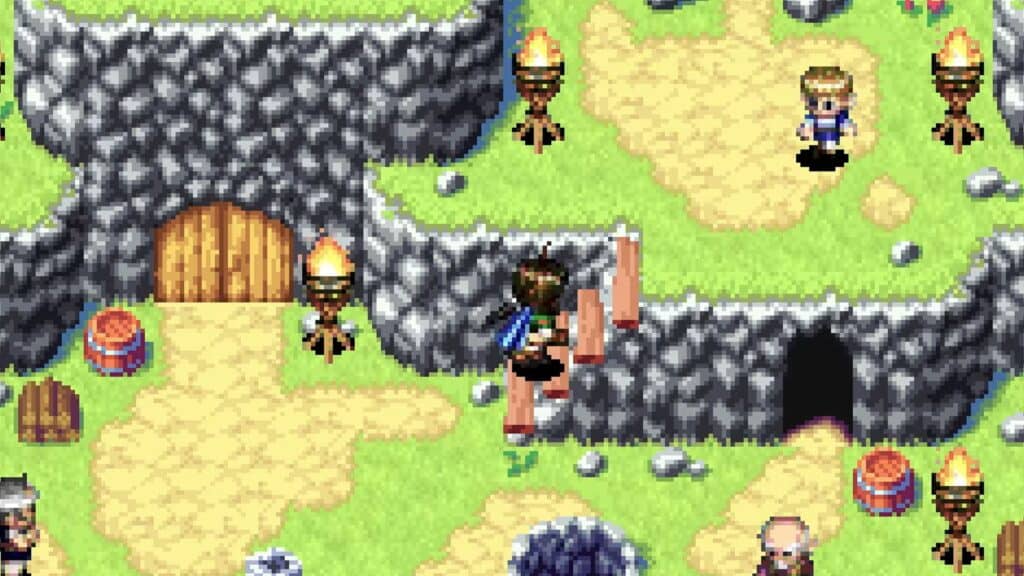
©Golden Sun gameplay screenshot - Original
- Release Date — November 12, 2001
- Platforms — Game Boy Advance
- Review Aggregate Score — 91% (Universal Acclaim)
Nintendo’s partnership with developer Camelot to produce an original JRPG would result in the phenomenal but short-lived Golden Sun games, with the first title in the series arguably taking the reins as the best game in the franchise. What makes Golden Sun shine (pun intended) is its adherence to and reverence for the 16-bit greats from Square and Enix, calling to mind the very best Dragon Quest and Final Fantasy games all while fitting into players’ pockets on the Game Boy Advance. Nintendo recently brought the Golden Sun games to Nintendo Switch Online, so here’s hoping that the series gets a new entry on the upcoming Switch 2.
Super Mario Sunshine
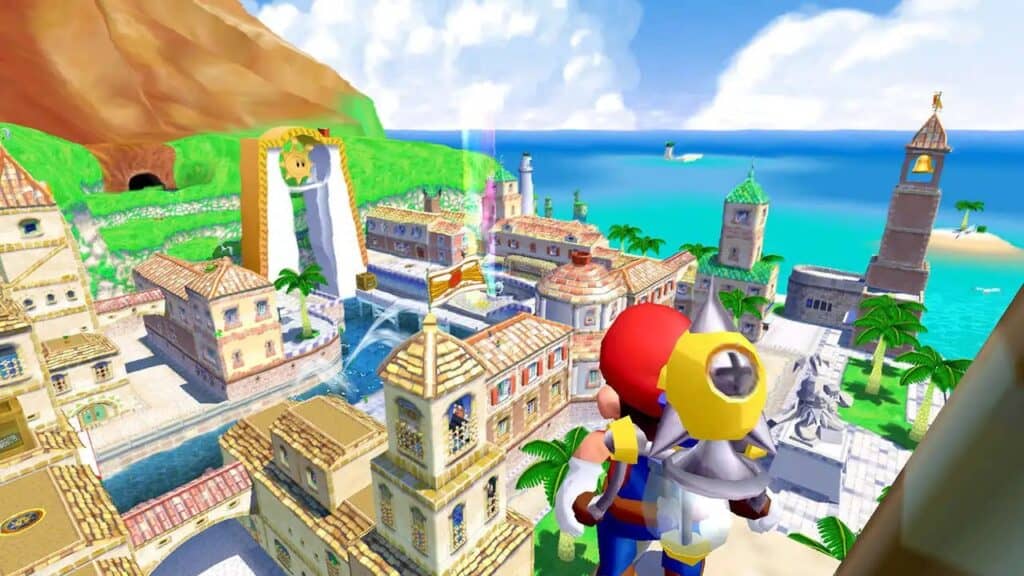
©Super Mario Sunshine gameplay screenshot - Original
- Release Date — August 26, 2002
- Platforms — GameCube
- Review Aggregate Score — 92% (Universal Acclaim)
Despite being widely regarded as a massive step up over Mario 64 at the time, reception for Mario Sunshine seems to have cooled somewhat in hindsight given how similar it is to Mario’s first 3D outing and the massive bump in quality the 3D Mario titles got with the excellent Super Mario Galaxy. Still, Super Mario Sunshine is an excellent 3D platformer with a charming and beautiful setting that makes great use of its main mechanic where Mario uses water to wash away ink that’s blotting out the sun. Even a lesser Mario game is still miles ahead of most 3D platformers.
Metroid Prime
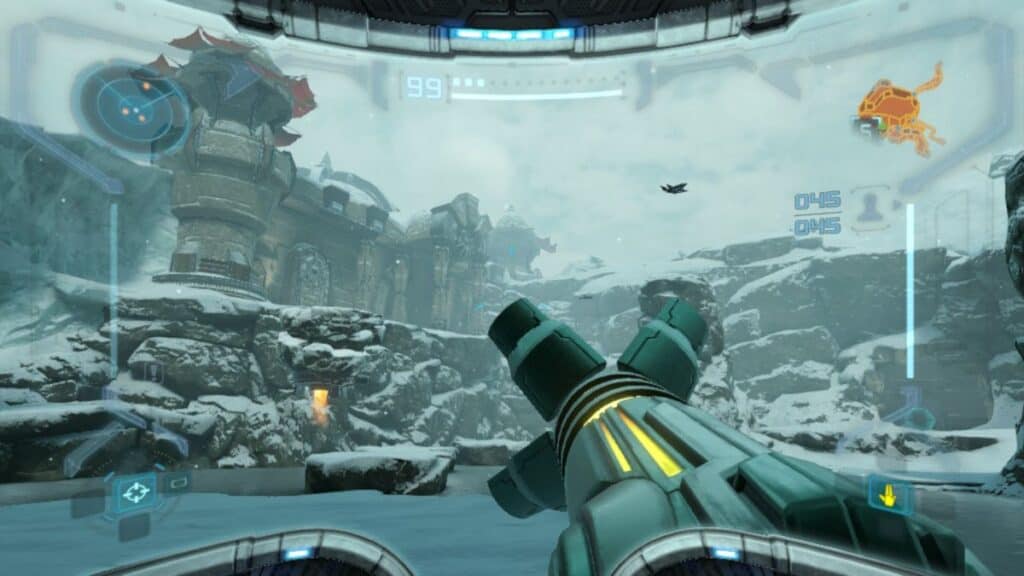
©Metroid Prime gameplay screenshot - Original
- Release Date — November 18, 2002
- Platforms — GameCube
- Review Aggregate Score — 97% (Universal Acclaim)
Taking the traditionally 2D Metroid franchise and translating it into a 3D first-person experience was a massive risk that paid off for Nintendo in the phenomenal Metroid Prime. Where Prime excels is in its understanding of the core gameplay elements and mechanics that players want to see in a Metroid game, becoming one of the best examples of a 3D Metroidvania in the process and still standing tall as the best game in the Metroid Prime trilogy. Metroid Prime is such a great game in the series that it’s amazing it took this long to put Samus into first-person.
The Legend of Zelda: The Wind Waker
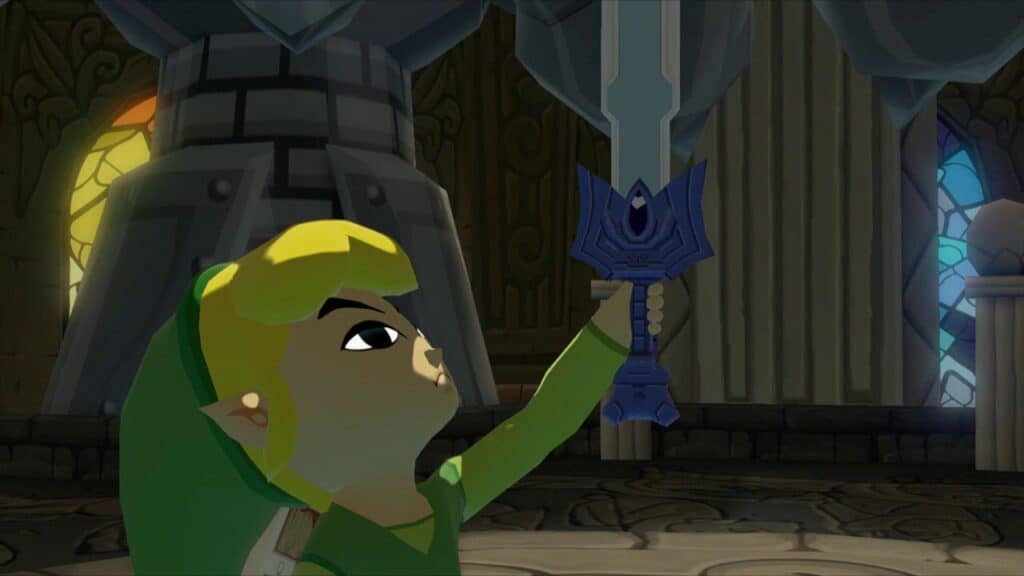
©Gameplay screenshot - Original
- Release Date — March 24, 2003
- Platforms — GameCube
- Review Aggregate Score — 96% (Universal Acclaim)
The initial tech demo for the GameCube featured a darker, more adult take on The Legend of Zelda franchise and its iconic characters, so it makes sense that the reveal of Wind Waker as the first Zelda title for the GameCube was met with fan backlash. However, Wind Waker ended up being one of the best games in the series and the next logical evolution of 3D Zelda from Ocarina of Time thanks to its incredible story, finely-tuned gameplay, excellent combat, and peaceful sailing mechanics. And, those cartoon visuals that fans were originally up in arms about continue to age gracefully, making Wind Waker one of the best-looking games in the Zelda series to this day.
Paper Mario: The Thousand-Year Door
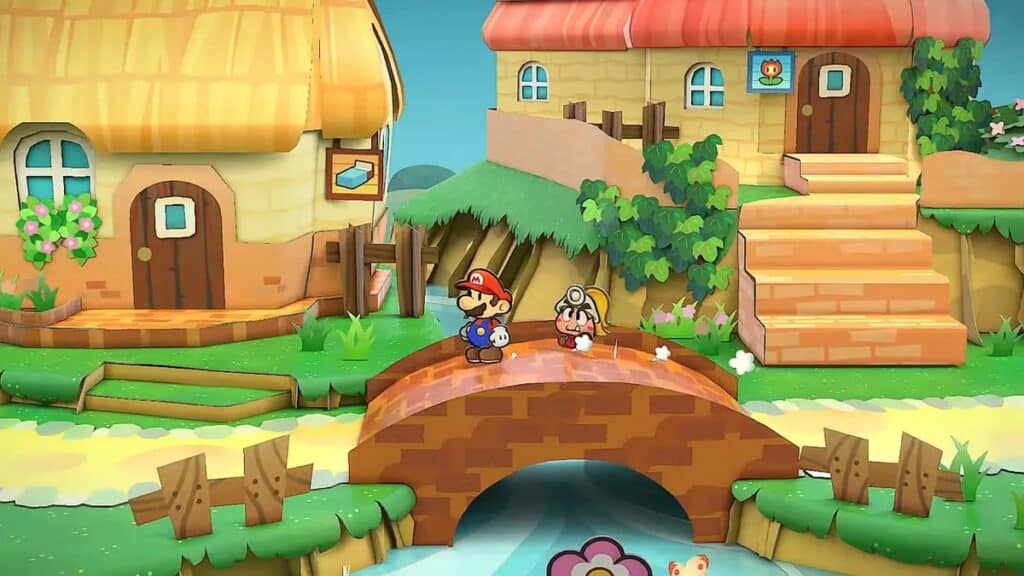
©Paper Mario: The Thousand-Year Door gameplay screenshot - Original
- Release Date — October 11, 2004
- Platforms — GameCube
- Review Aggregate Score — 88% (Generally Favorable)
The first sequel to Super Mario RPG was Paper Mario on the Nintendo 64, but the second Paper Mario game on GameCube goes down as the best RPG featuring Mario and his allies. Paper Mario: The Thousand-Year Door borrows a lot from Super Mario RPG — timing-based button inputs during turn-based combat, a charming sense of humor, standout characters, synergy attacks — but it does so all while spinning one of the best stories to ever star Mario, Princess Peach, and Bowser. It’s no surprise that the announcement of the game’s remake for Switch was met with near-universal praise.
The Legend of Zelda: Twilight Princess
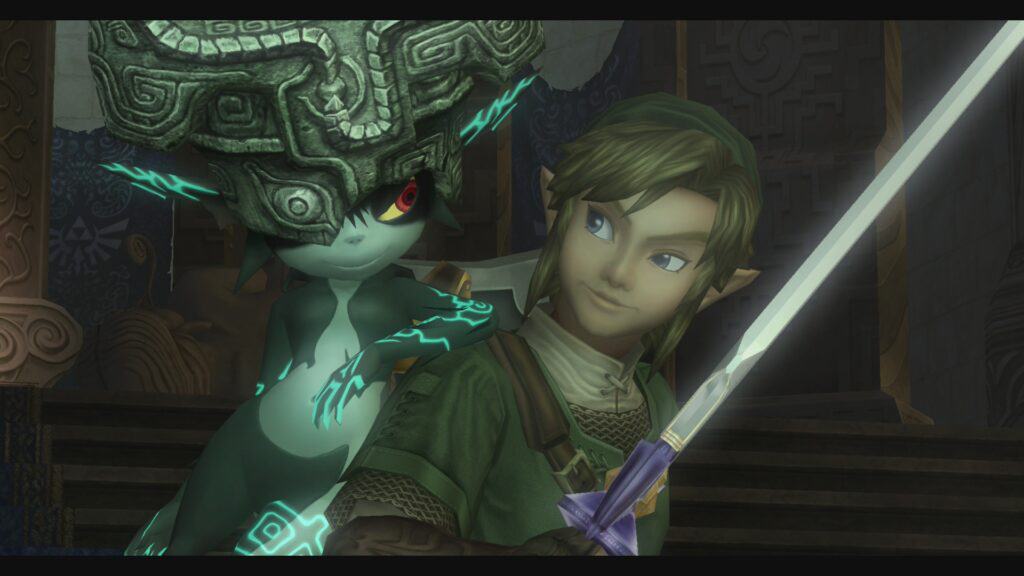
©The Legend of Zelda: Twilight Princess gameplay screenshot - Original
- Release Date — November 19, 2006
- Platforms — Wii, GameCube
- Review Aggregate Score — 96% (Universal Acclaim)
The first Zelda game to release as a cross-gen title, Twilight Princess makes good on the promise of the GameCube’s initial tech demo by giving players a decidedly darker take on the kingdom of Hyrule and its most famous residents. Further, the game transforms the way players approach playing a 3D Zelda thanks to its implementation of motion controls on the Wii, which are both novel and somewhat distracting for longtime fans more used to traditional control schemes. Regardless, Twilight Princess features some excellent combat and puzzle-solving, some series-best dungeons and boss encounters, and a captivating adventure that cements the title as yet another must-play game in the Zelda series.
Wii Sports
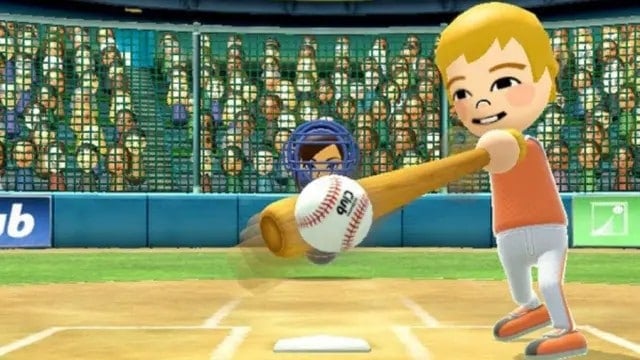
©Wii Sports gameplay screenshot - Original
- Release Date — November 19, 2006
- Platforms — Wii
- Review Aggregate Score — 76% (Generally Favorable)
The system pack-in with the Nintendo Wii is a stroke of genius on Nintendo’s part, with Wii Sports perfectly capturing the casual appeal of the system’s motion controls and helping to push the console into millions of non-gaming households. There was a time when it seemed like every household in America had a Wii with a copy of Wii Sports, and its surprisingly accurate and entertaining depictions of sports like tennis and bowling felt incredibly satisfying using the WiiMote motion controls. The Wii was the undisputable winner of the 7th console generation, and it’s hard to argue against the mass appeal of Wii Sports playing a significant role in that success.
Super Smash Bros. Brawl
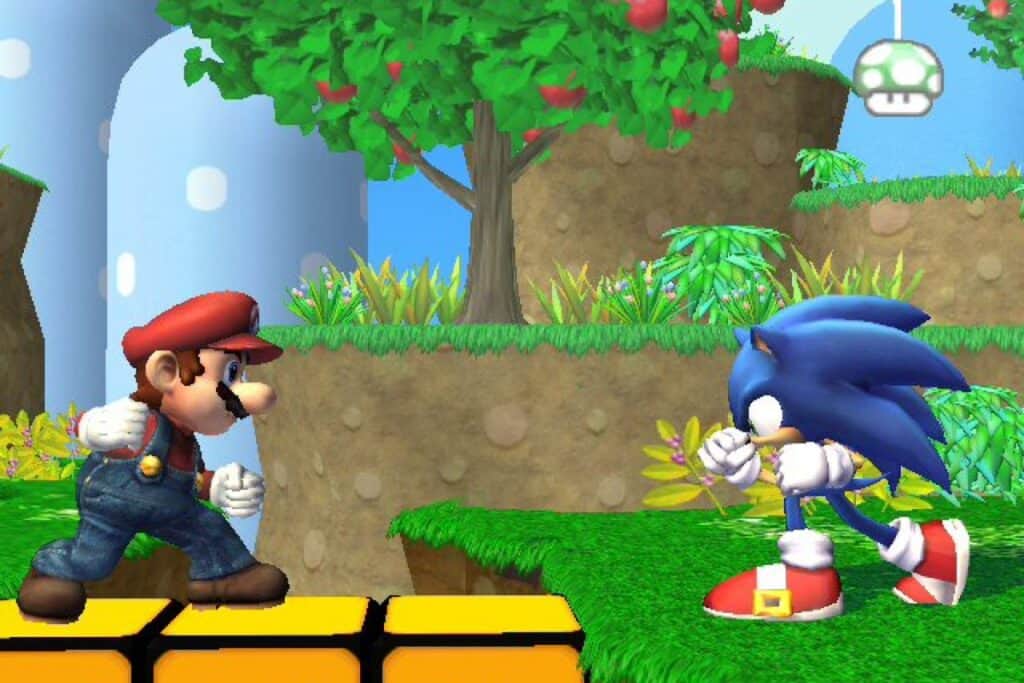
©Super Smash Bros. Brawl gameplay screenshot - Original
- Release Date — March 9, 2008
- Platforms — Wii
- Review Aggregate Score — 93% (Universal Acclaim)
The original Super Smash Bros. and Super Smash Bros. Melee are each great games, but Super Smash Bros. Brawl on the Wii is where the series truly began to transcend its origins as a Nintendo first-party title and take on an important place as a digital museum of video games. From the inclusion of non-Nintendo characters like Metal Gear Solid‘s Solid Snake and none other than Sonic the Hedgehog himself to the game’s incredible story mode, Super Smash Bros. Brawl is both an essential Wii title and one of the best games in the Smash Bros. series.
Pokemon HeartGold and SoulSilver
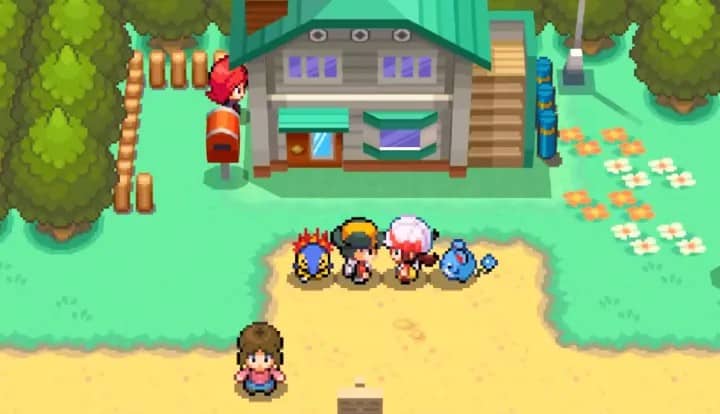
©Pokemon HeartGold/SoulSilver gameplay screenshot - Original
- Release Date — March 14, 2010
- Platforms — Nintendo DS
- Review Aggregate Score — 87% (Generally Favorable)
Long considered the two best games in the Pokemon series, HeartGold and SoulSilver are the DS remakes of the Game Boy Color’s Pokemon Gold and Silver. Unsurprisingly, this duo of Pokemon games are every bit as fun as they were originally, simultaneously setting a high bar for new mainline Pokemon games and future remakes of classic entries in the series. The Pokemon franchise regularly receives flak for how it rests on its laurels and doesn’t innovate much from entry to entry, which makes HeartGold and SoulSilver special thanks to how the games call back to a time when the Pokemon series still took significant risks.
Super Mario Galaxy 2
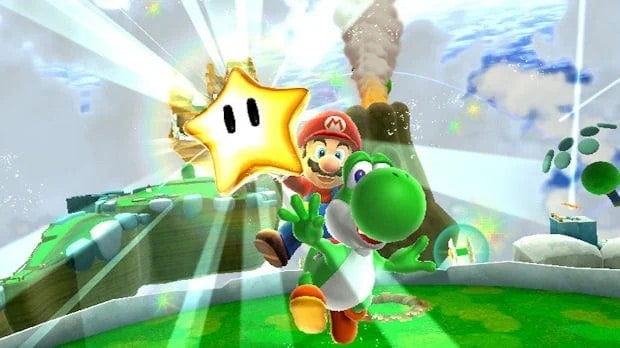
©Super Mario Galaxy 2 gameplay screenshot - Original
- Release Date — May 23, 2010
- Platforms — Wii
- Review Aggregate Score — 97% (Universal Acclaim)
Even in the wake of Super Mario Odyssey on the Nintendo Switch, there’s a strong case for Super Mario Galaxy remaining the best 3D game in the Mario franchise. Super Mario Galaxy 2 takes everything great about its predecessor and expands upon it, delivering one of the most satisfying and flat-out fun 3D platformers ever and making great use of the Wii’s motion controls in the process. Taking Mario into zero gravity results in some truly astounding level designs, and Super Mario Galaxy 2 sees the franchise hit a creative peak in that area.
Fire Emblem: Awakening
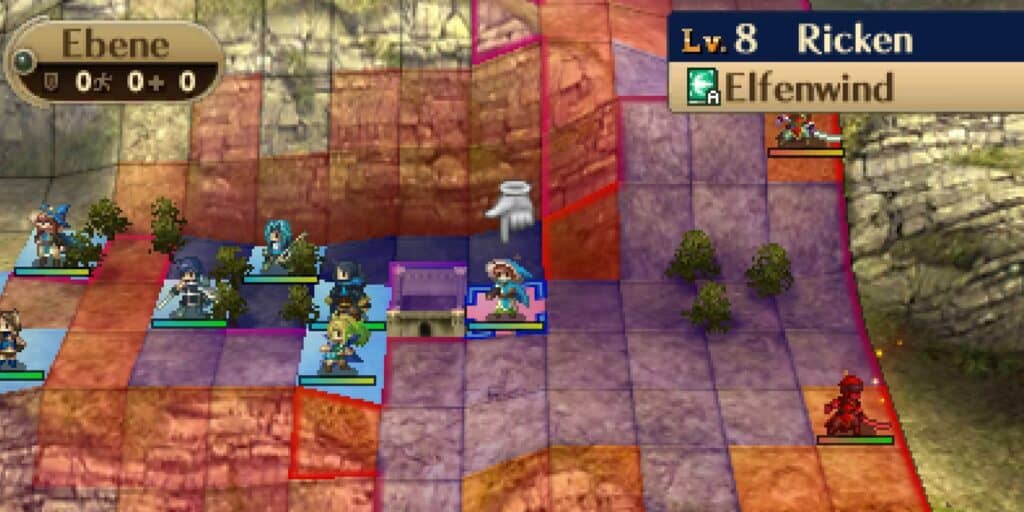
©Fire Emblem: Awakening gameplay screenshot - Original
- Release Date — February 4, 2013
- Platforms — Nintendo 3DS
- Review Aggregate Score — 92% (Universal Acclaim)
After years of failing to break through in the West, Fire Emblem: Awakening was intended to be the “last hurrah” for Nintendo’s tactical RPG series. Thankfully, Fire Emblem: Awakening experienced massive success to become one of the must-have titles on the 3DS and the greatest new game in the tactical RPG/simulation RPG genre in over a decade. Awakening takes the Fire Emblem series’ traditional emphasis on relationships among units and expands it to include not just romantic connections but familial ones, allowing players to play matchmaker between their soldiers and eventually recruit their children as part of a warrior dynasty.
Super Mario 3D World
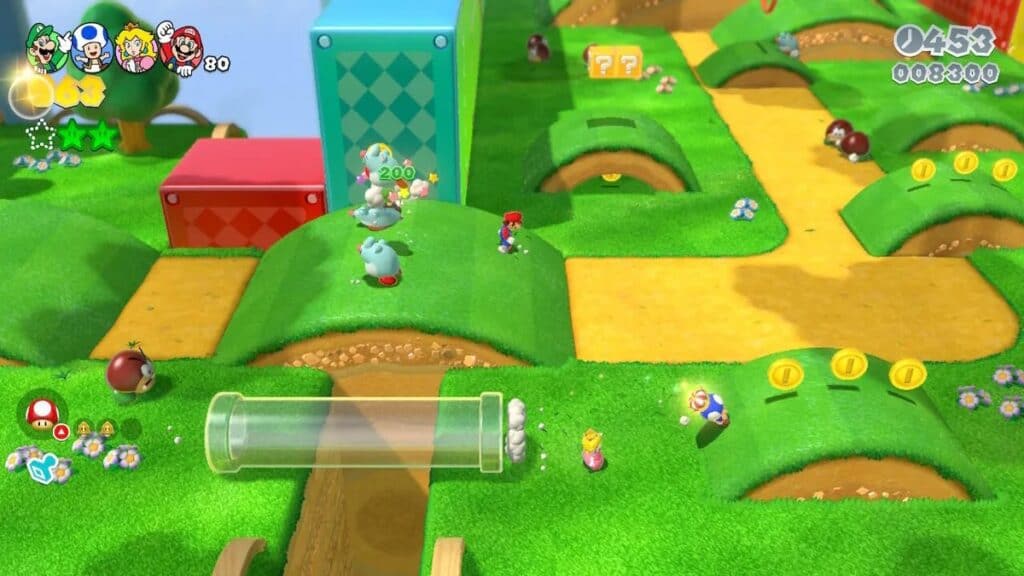
©Nintendo Co., Ltd. - Original
- Release Date — November 22, 2013
- Platforms — Wii U
- Review Aggregate Score — 93% (Universal Acclaim)
Not quite a full 3D Mario and not quite the retro throwback that the New Super Mario Bros. series represents, Super Mario 3D World sits somewhere in between Mario’s classic and modern platforming, all while maintaining the distinct feel of a Mario game. With some excellent level design, challenging (but also accessible) platforming, and the introduction of seamless four-player co-op, Super Mario 3D World ended up being one of the best games on the Wii U and a worthy successor to the excellent Super Mario Galaxy 2.
The Legend of Zelda: Breath of the Wild
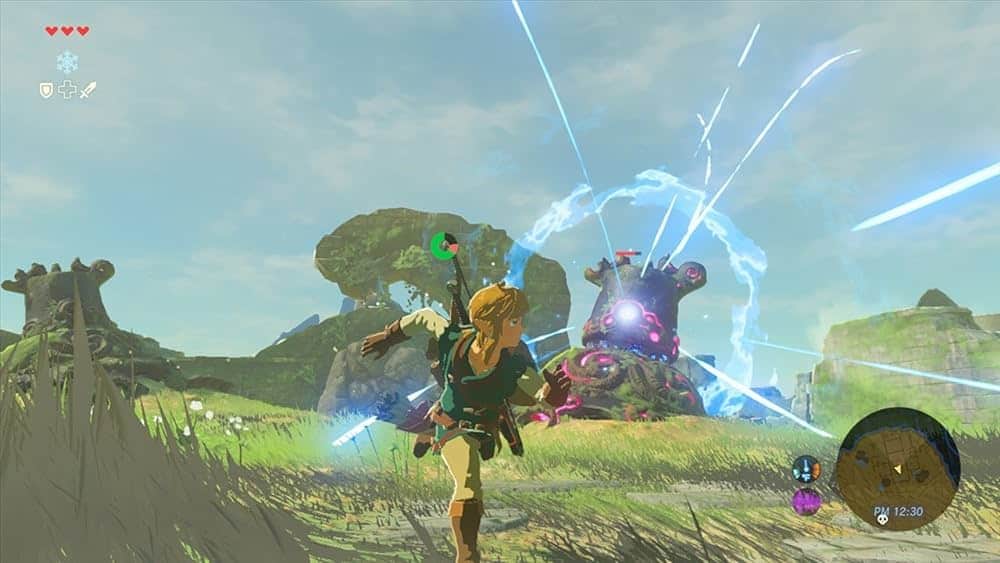
©The Legend of Zelda: Breath of the Wild gameplay screenshot - Original
- Release Date — March 3, 2017
- Platforms — Nintendo Switch, Wii U
- Review Aggregate Score — 97% (Universal Acclaim)
After years of 3D Zelda games that utilized Ocarina of Time‘s general format, Breath of the Wild bravely reinvents the Legend of Zelda series by looking to its past to chart the course for its future. Not since the original Legend of Zelda have players had the same kind of freedom to explore Hyrule and Breath of the Wild actively rewards players that stray from the game’s critical path to approach its open-world sandbox any way they see fit. As a launch title for the Nintendo Switch, it’s obvious that Breath of the Wild‘s and the Nintendo Switch’s success are inextricable from one another.
Mario Kart 8 Deluxe
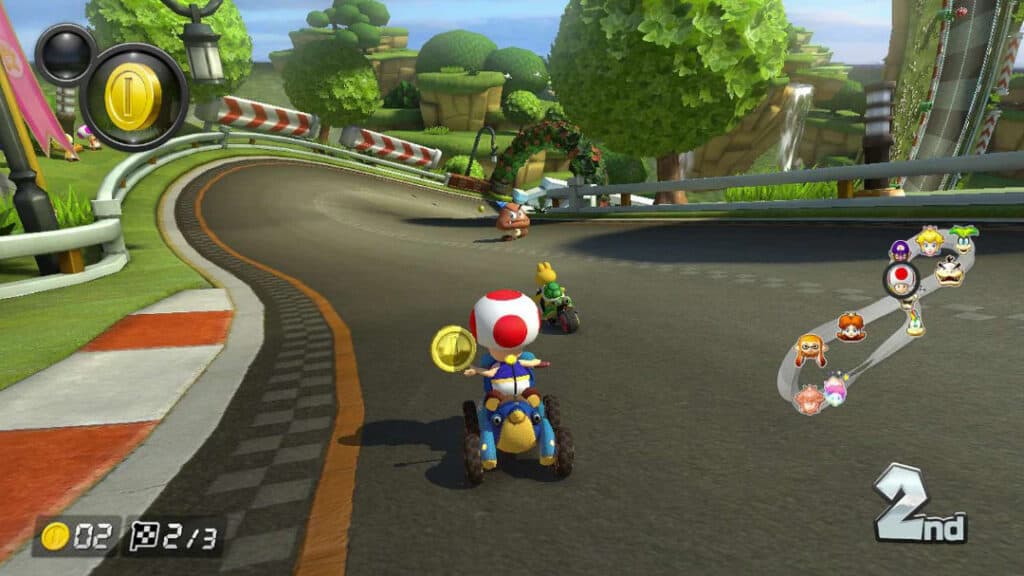
©Mario Kart 8 gameplay screenshot - Original
- Release Date — April 28, 2017
- Platforms — Nintendo Switch
- Review Aggregate Score — 92% (Universal Acclaim)
One of the earliest Wii U games to receive a Switch port was the excellent Mario Kart 8, and Mario Kart 8Deluxe is both a must-have Switch game and the best game in the Mario Kart series. Aside from its excellent single-player mode where players can unlock new racers, karts, and tracks, Mario Kart 8 Deluxe is a definitive staple in the Switch’s library for multiplayer gaming, with both local and online multiplayer a cornerstone of the title’s success and continued appreciation among Switch owners. That Mario Kart 8 Deluxe still regularly shows up on best-seller charts years later is a testament to how important it is in the Switch library.
Metroid: Samus Returns
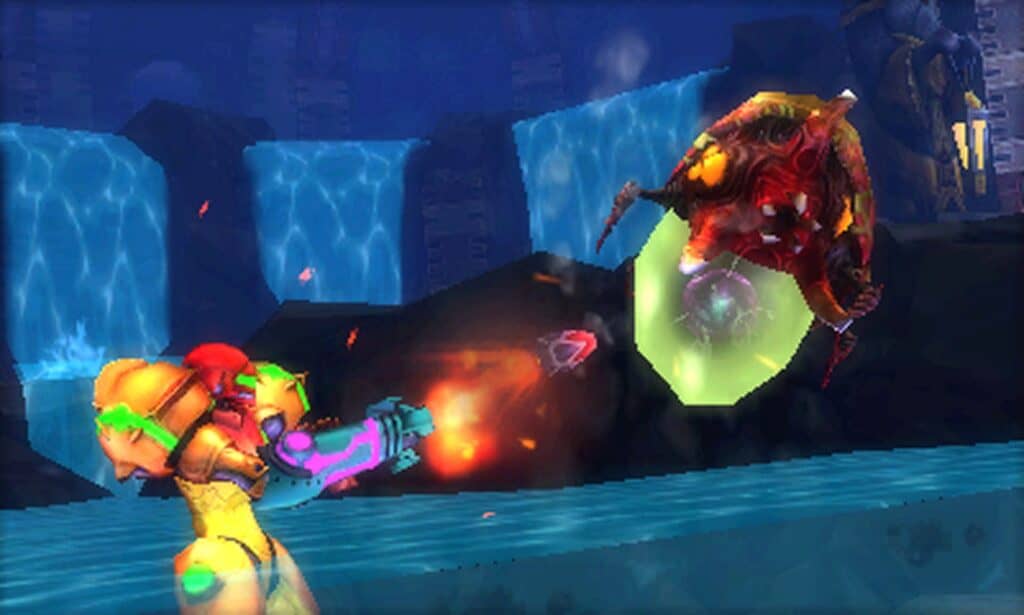
©Metroid: Samus Returns gameplay screenshot - Original
- Release Date — September 15, 2017
- Platforms — Nintendo 3DS
- Review Aggregate Score — 85% (Generally Favorable)
The original Metroid II: Samus Returns is a great game that is somewhat diminished by the brilliance and innovation of its follow-up, so remaking the game was practically a no-brainer. Rather than handle the remake internally, Nintendo hired Spanish developer Mercury Steam to handle the 3DS reimagining of Samus Returns, and the results speak for themselves. Samus Returns faithfully recreates the dangerous world of SR388 all while adding in new quality-of-life features that fans have come to expect in Metroidvanias like an interactive map, regular save points, and more. More than just a great remake, Samus Returns breathes new life into one of the Metroid series’ most underappreciated games.
Super Mario Odyssey
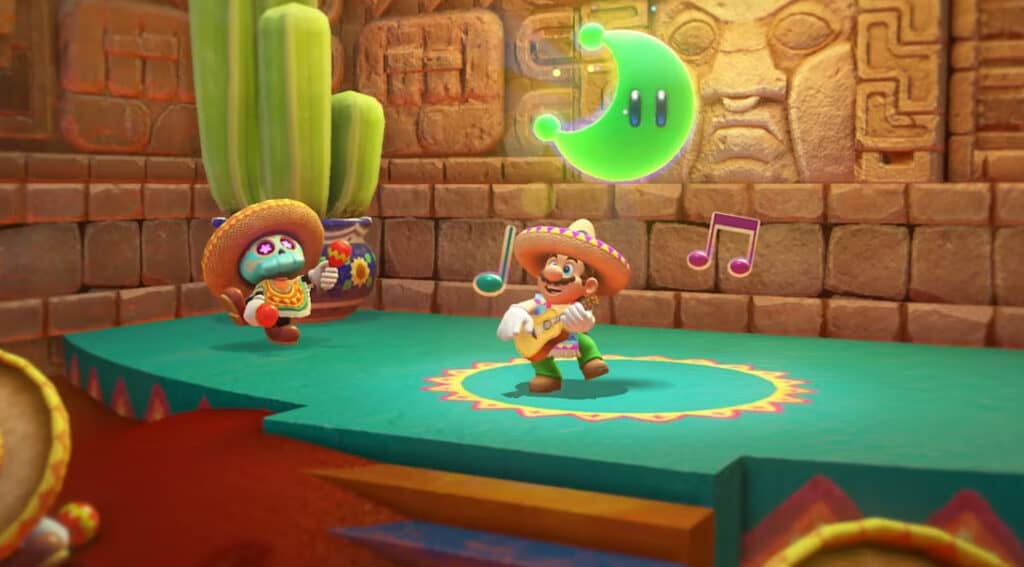
©Screenshot from Super Mario Odyssey Sombrero - Original / License
- Release Date — October 27, 2017
- Platforms — Nintendo Switch
- Review Aggregate Score — 97% (Universal Acclaim)
Switch owners were eating very good in the first year of the console’s life span, with new Zelda, Mario Kart, and Mario titles all arriving on the console in rapid succession. While it’s not quite the series reinvention that Breath of the Wild is to Zelda, Super Mario Odyssey is still an incredible 3D Mario game and one of the best platformers on the Switch. The title’s main mechanic, using Mario’s hat “Cappy” to control enemies and take on different abilities, creates a whole host of new opportunities in approaching Odyssey‘s combat and platforming, and the game’s stunning level design and ingenious puzzles only add to its charm as one of the best Mario games.
Donkey Kong Country: Tropical Freeze
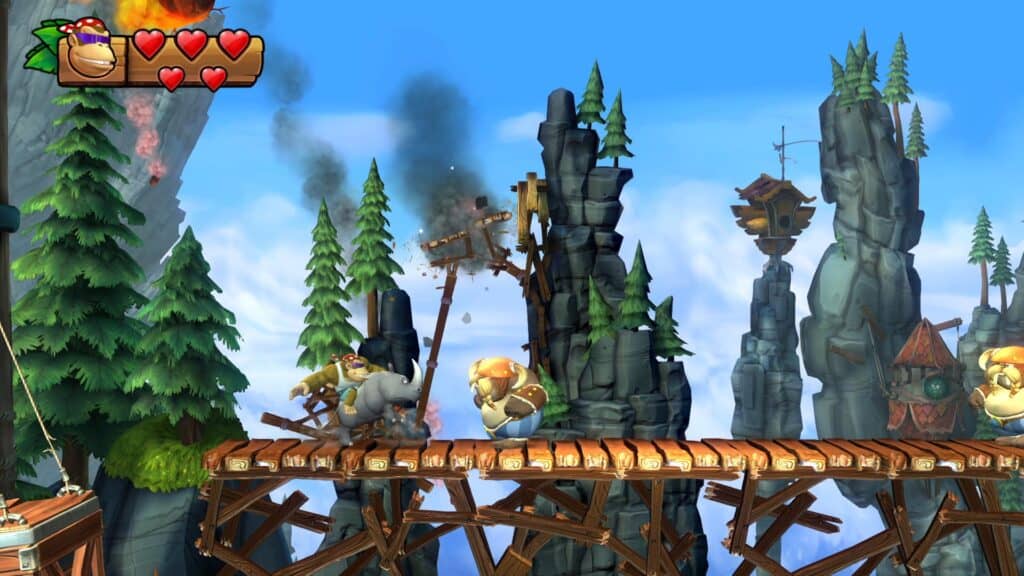
©Donkey Kong Country: Tropical Freeze gameplay screenshot - Original
- Release Date — May 4, 2018
- Platforms — Nintendo Switch
- Review Aggregate Score — 86% (Generally Favorable)
Both Donkey Kong Country Returns and its sequel Tropical Freeze are excellent side-scrolling platformers that honor the legacy of the original Donkey Kong Country trilogy on SNES. If choosing just one, though, Tropical Freeze reigns supreme thanks to its hefty challenge, excellent level design, and nods to accessibility thanks to the inclusion of an “easy mode” character that can help players get over the hump of seemingly impossible stages.
Super Smash Bros. Ultimate
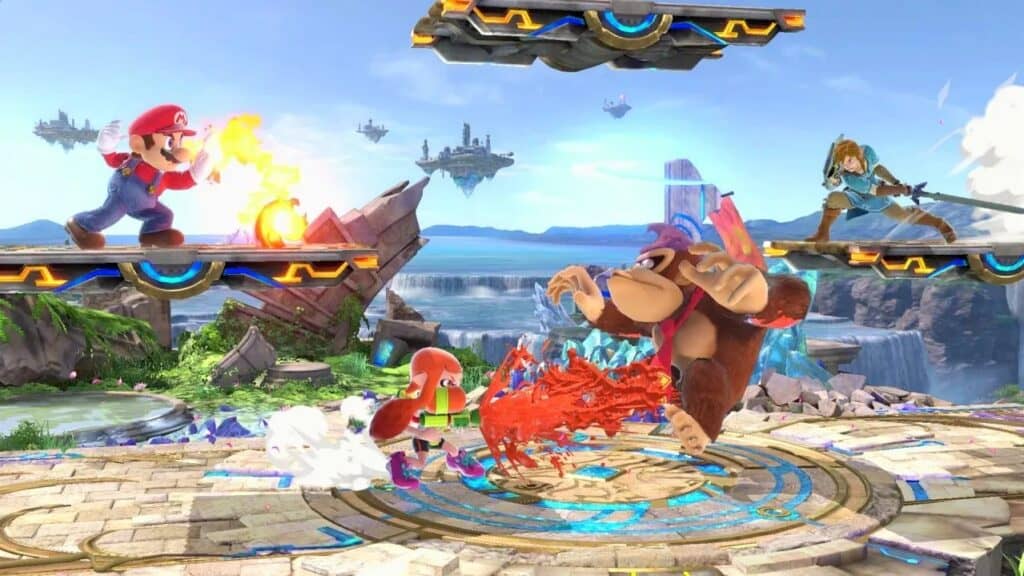
©Super Smash Bros. Ultimate gameplay screenshot - Original
- Release Date — December 7, 2018
- Platforms — Nintendo Switch
- Review Aggregate Score — 93% (Universal Acclaim)
Like Super Smash Bros. Brawl before it, Smash Bros. Ultimate is an essential game for any Switch owner to have in their library for a variety of reasons. First, Ultimate features the best roster of any Smash Bros. game, including some surprising fighters from legendary third-party franchises and a staggering array of support characters and trophies. To say that Ultimate is the “ultimate” video game museum might not be doing it justice. Second, Ultimate‘s single-player and multiplayer modes can potentially provide hundreds of hours of gameplay, with players getting a true bang for their buck. Lastly, Super Smash Bros. Ultimate continues to grow and receive updates, and Smash Bros. platform-arena battling has never been as great as it is in the latest entry.
Fire Emblem: Three Houses
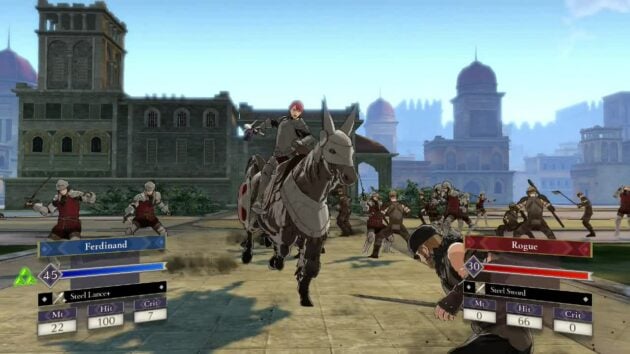
©Fire Emblem: Three Houses gameplay screenshot - Original
- Release Date — July 26, 2019
- Platforms — Nintendo Switch
- Review Aggregate Score — 89% (Generally Favorable)
After the success of Awakening and its follow-ups Conquest and Birthright, the Fire Emblem series made its next logical evolution in the series’ first outing on the Switch. Fire Emblem: Three Houses features not one but three separate campaigns, each of which eventually sees former friends fighting against one another after all starting as cadets at a military academy. And that military academy plays a crucial role in Three Houses‘ gameplay loop, with the title incorporating a school/social simulation into its non-battle sections that gives off an undeniable Harry Potter vibe.
Luigi’s Mansion 3

©Luigi's Mansion 3 gameplay screenshot - Original
- Release Date — October 31, 2019
- Platforms — Nintendo Switch
- Review Aggregate Score — 86% (Generally Favorable)
The third Luigi’s Mansion game looks and plays the best out of any game in the spin-off series featuring Mario’s cowardly brother, and the setup of the game taking place in a hotel allows for each floor to take on a surprising theme and exhibit some top-tier level design. Additionally, the introduction of co-op play thanks to “Gooigi” is a stroke of genius that should have been implemented in prior Luigi’s Mansion games. Luigi’s Mansion 3 is about as close as one can get to a Nintendo-made Ghostbusters game, and that alone earns it a place on this list.
Animal Crossing: New Horizons
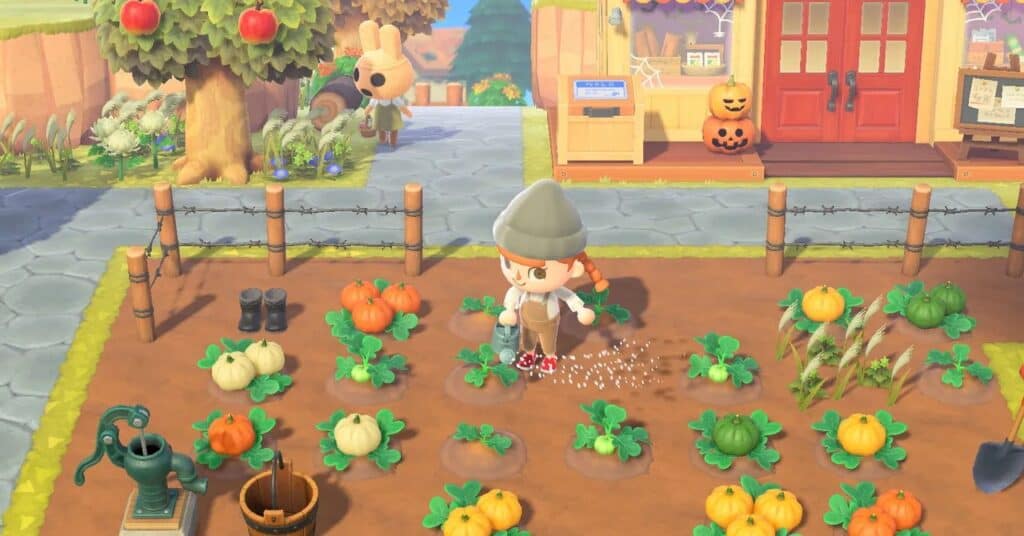
©Animal Crossing: New Horizons gameplay screenshot - Original
- Release Date — March 20, 2020
- Platforms — Nintendo Switch
- Review Aggregate Score — 90% (Universal Acclaim)
Animal Crossing: New Horizons‘ arrival on the Nintendo Switch couldn’t have been more perfectly timed, with the game’s launch coinciding with the spread of the COVID-19 virus and the ensuing lockdowns. Thanks to online shopping, both physical copies of Animal Crossing: New Horizons and Nintendo Switch hardware were practically impossible to come by during the initial weeks of the pandemic, and for a while, players were able to put the madness of the world aside in favor of getting lost in their virtual islands. Animal Crossing: New Horizons excels by not challenging the player to do anything other than enjoy their time curating a perfect home for their avatars and the other residents of the island.
Metroid Dread
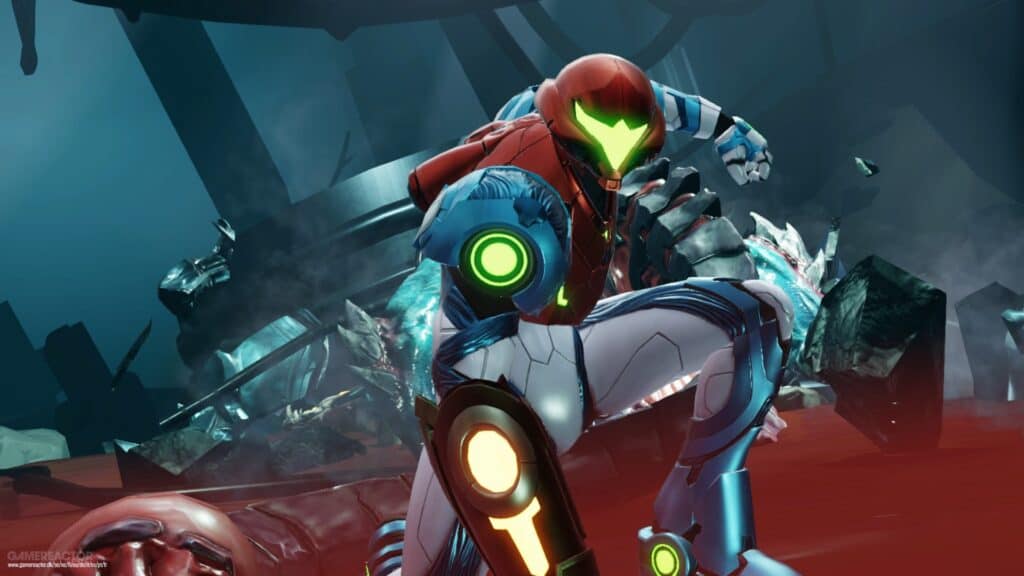
©Gameplay screenshot - Original
- Release Date — October 8, 2021
- Platforms — Nintendo Switch
- Review Aggregate Score — 88% (Generally Favorable)
Mercury Steam did such an impressive job remaking Samus Returns that Nintendo partnered up with the developer again to produce the first new 2D Metroid game in decades. A direct follow-up to the excellent Metroid Fusion, Metroid Dread tells what is (for now) the last story in Samus’ saga, revealing some stunning plot points in its last few hours that have the potential to change the trajectory of the franchise moving forward. In addition to its compelling narrative, Metroid Dread is also a phenomenal Metroidvania that introduces a surprising survival horror element that is a natural fit for the series.
Advance Wars 1 + 2: Re-Boot Camp
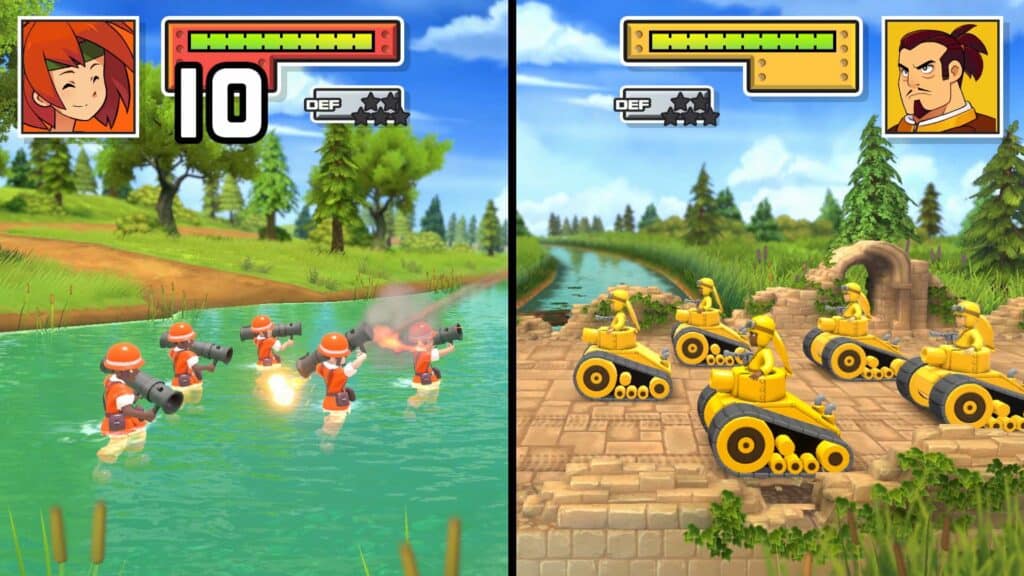
©Advance Wars 1 + 2: Re-Boot Camp gameplay screenshot - Original
- Release Date — April 21, 2023
- Platforms — Nintendo Switch
- Review Aggregate Score — 82% (Generally Favorable)
The best part about the remakes of the Game Boy Advance Advance Wars titles is that they don’t do much other than improve the visuals. The same core gameplay of Advance Wars and Advance Wars 2 is still very much present in Advance Wars 1 + 2: Re-Boot Camp and that’s a good thing. After all — if it ain’t broke, don’t fix it. Ultimately, Advance Wars 1 +2 is a reminder of how excellent the Advance Wars series was and still is, and it also happens to be one of the best turn-based tactics games on the Switch.
Pikmin 4
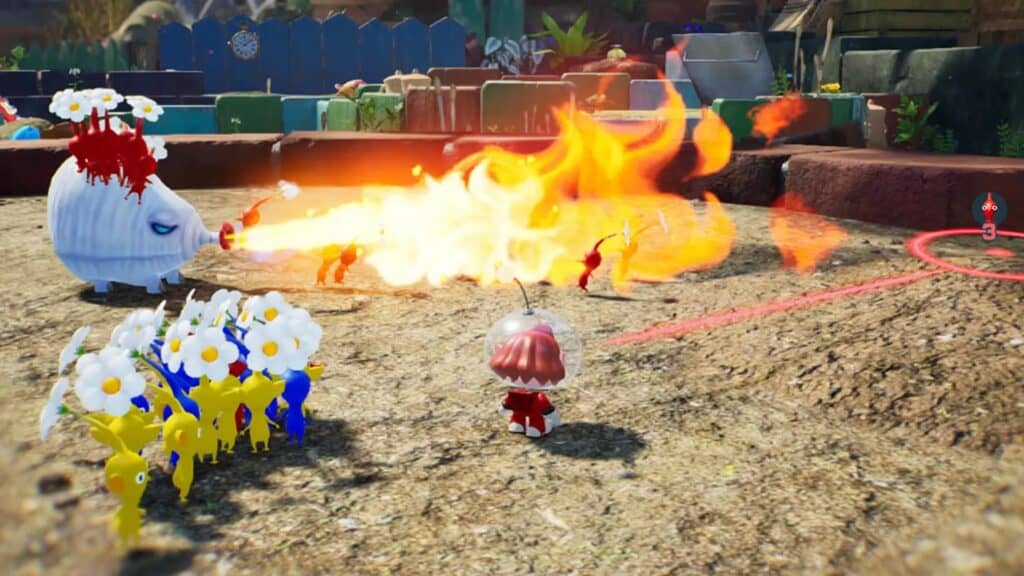
©Pikmin 4 gameplay screenshot - Original
- Release Date — July 21, 2023
- Platforms — Nintendo Switch
- Review Aggregate Score — 87% (Generally Favorable)
The first three Pikmin games will always have a special place in the hearts of fans who have been playing the series since its GameCube debut, but Pikmin 4 introduces enough new ideas and streamlines old ones to become the greatest entry in Nintendo’s most criminally overlooked franchise. Pikmin 4 is a game that absolutely oozes charm and is a perfect starting point for players new to the franchise. It does a great job of easing players into its puzzle-platforming gameplay and is also the best-looking game in the series.
The Legend of Zelda: Tears of the Kingdom
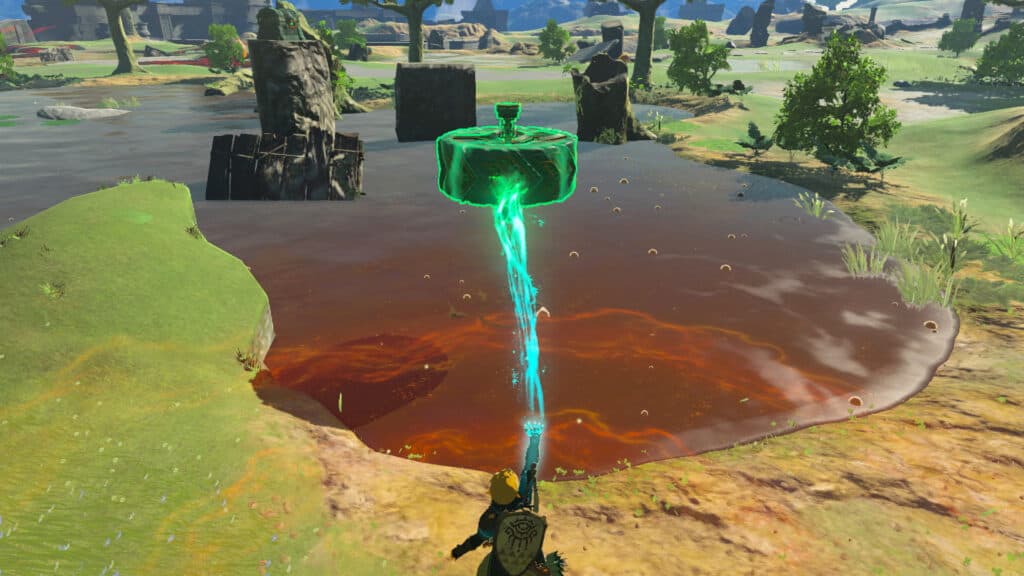
©Zelda gameplay screenshot c/o Nintendo - Original
- Release Date — May 12, 2023
- Platforms — Nintendo Switch
- Review Aggregate Score — 96% (Universal Acclaim)
It’s practically a miracle that Nintendo was able to not only expand on Breath of the Wild but fit mechanics into its framework that are worthy of their own separate game. Equally as impressive is that the game runs on the Switch at all, with Tears of the Kingdom feeling like a next-gen title running on 7-year-old hardware. Regardless, Tears of the Kingdom is more than just a follow-up or large DLC for Breath of the Wild. The new Fusion and Ultrahand abilities completely recontextualize how players interact with the open-world sandbox of Hyrule, making Tears of the Kingdom one of the most impressive and important games in the series since Ocarina of Time.
Super Mario Bros. Wonder
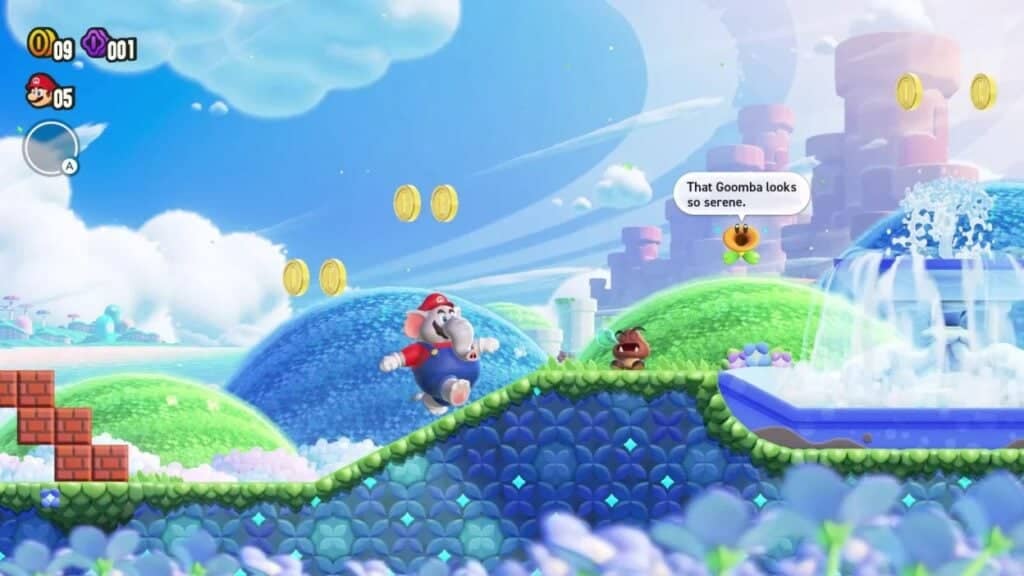
©Super Mario Bros. Wonder gameplay screenshot - Original
- Release Date — October 20, 2023
- Platforms — Nintendo Switch
- Review Aggregate Score — 92% (Universal Acclaim)
More than 30 years later, Super Mario Bros. Wonder feels like the true sequel to Super Mario World that players never got in favor of a game starring Yoshi and Baby Mario. Wonder is 2D Mario at its best, with incredibly inventive level design and platforming challenges that will stretch players’ skills to their limit. The introduction of the Wonder Seeds and the need to replay levels adds a nice completionist element to the title, and the joy of using the new power-ups makes Super Mario Bros. Wonder yet another must-have first-party game in the Switch library.
Super Mario RPG
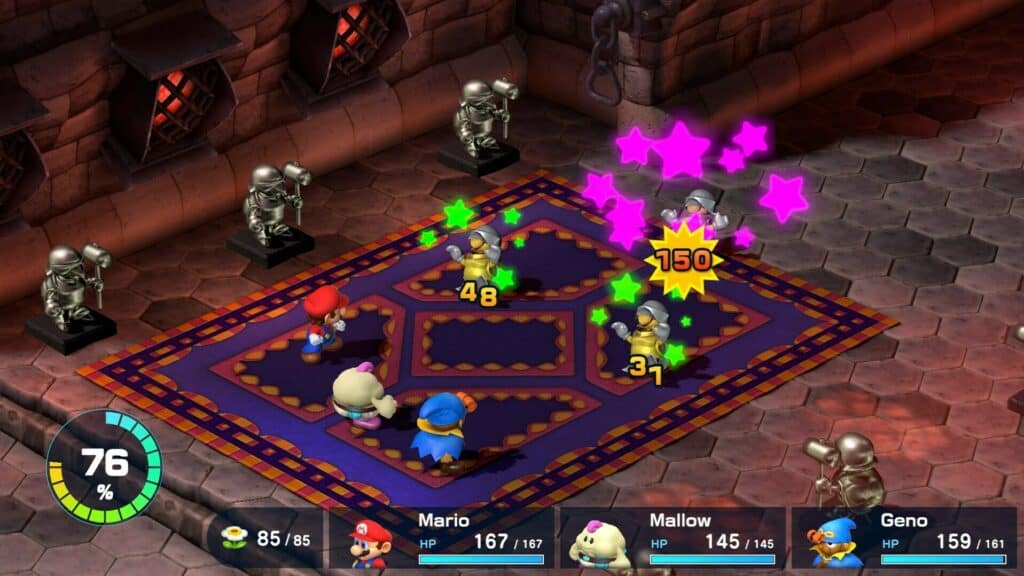
©Super Mario RPG gameplay screenshot - Original
- Release Date — November 17, 2023
- Platforms — Nintendo Switch
- Review Aggregate Score — 84% (Generally Favorable)
Rather than include the original Super Mario RPG: Legend of the Seven Stars on this list, it makes more sense to give its spot to the incredible remake of the game from last year, Super Mario RPG. Like Advance Wars 1 + 2, Super Mario RPG basically keeps the core gameplay of the original intact in favor of refreshing the visuals and audio, and the result is the same — Super Mario RPG is the definitive version of one of Nintendo’s best games. While most RPGs are tests of player endurance lasting anywhere between 70-100 hours, Super Mario RPG packs a meaningful adventure into roughly 40 hours and never feels like it’s a lesser experience because of it.
The image featured at the top of this post is ©Nintendo Switch hardware.
